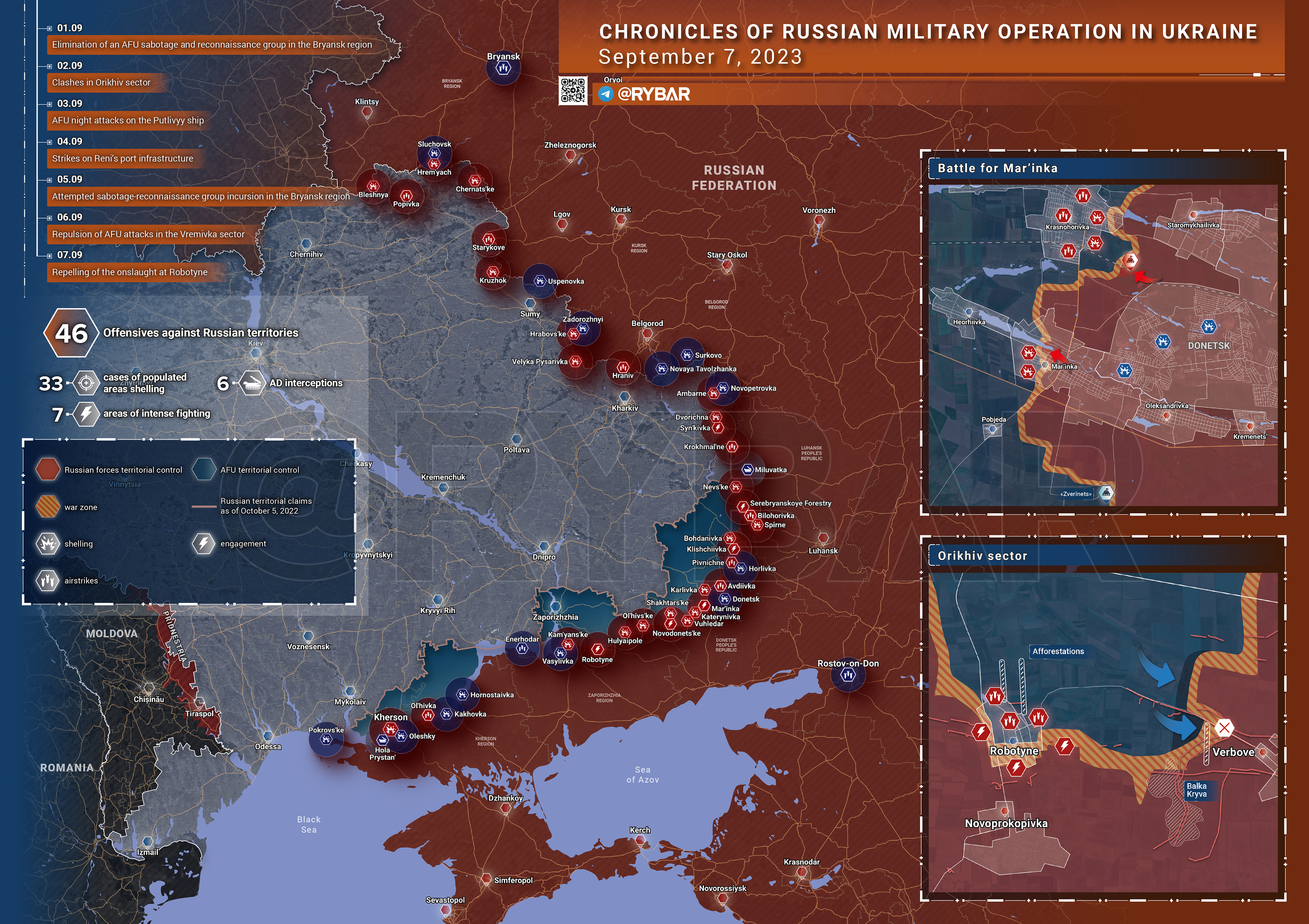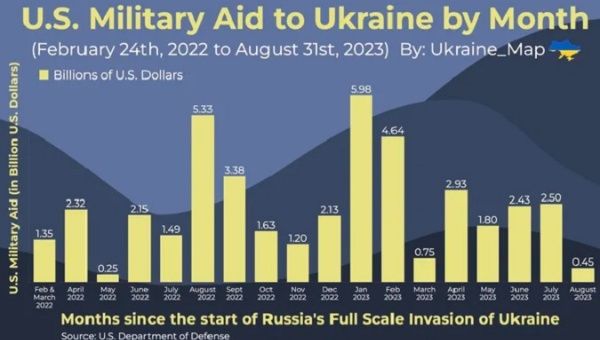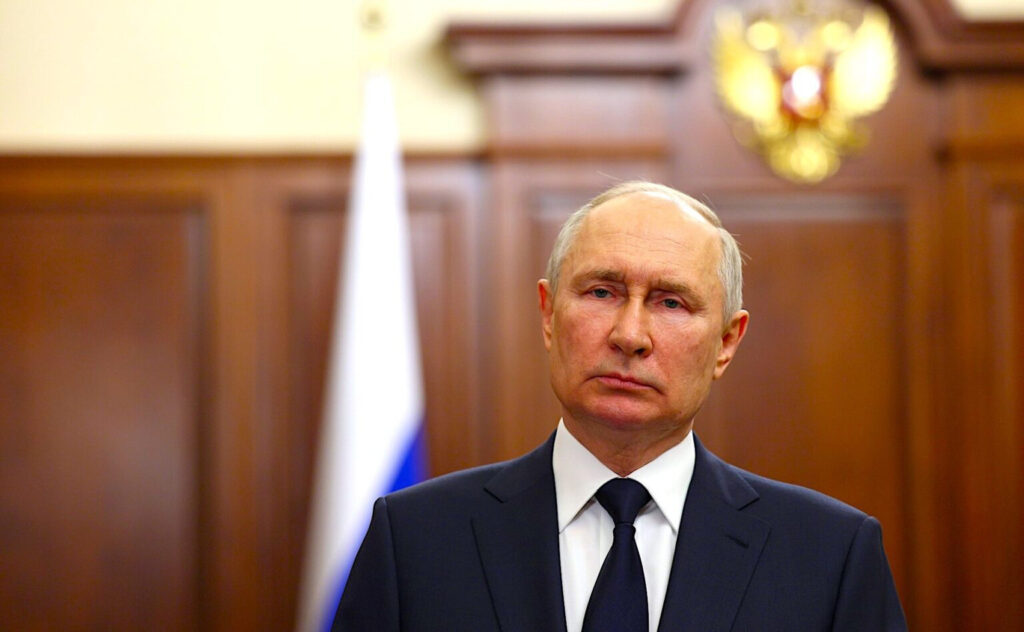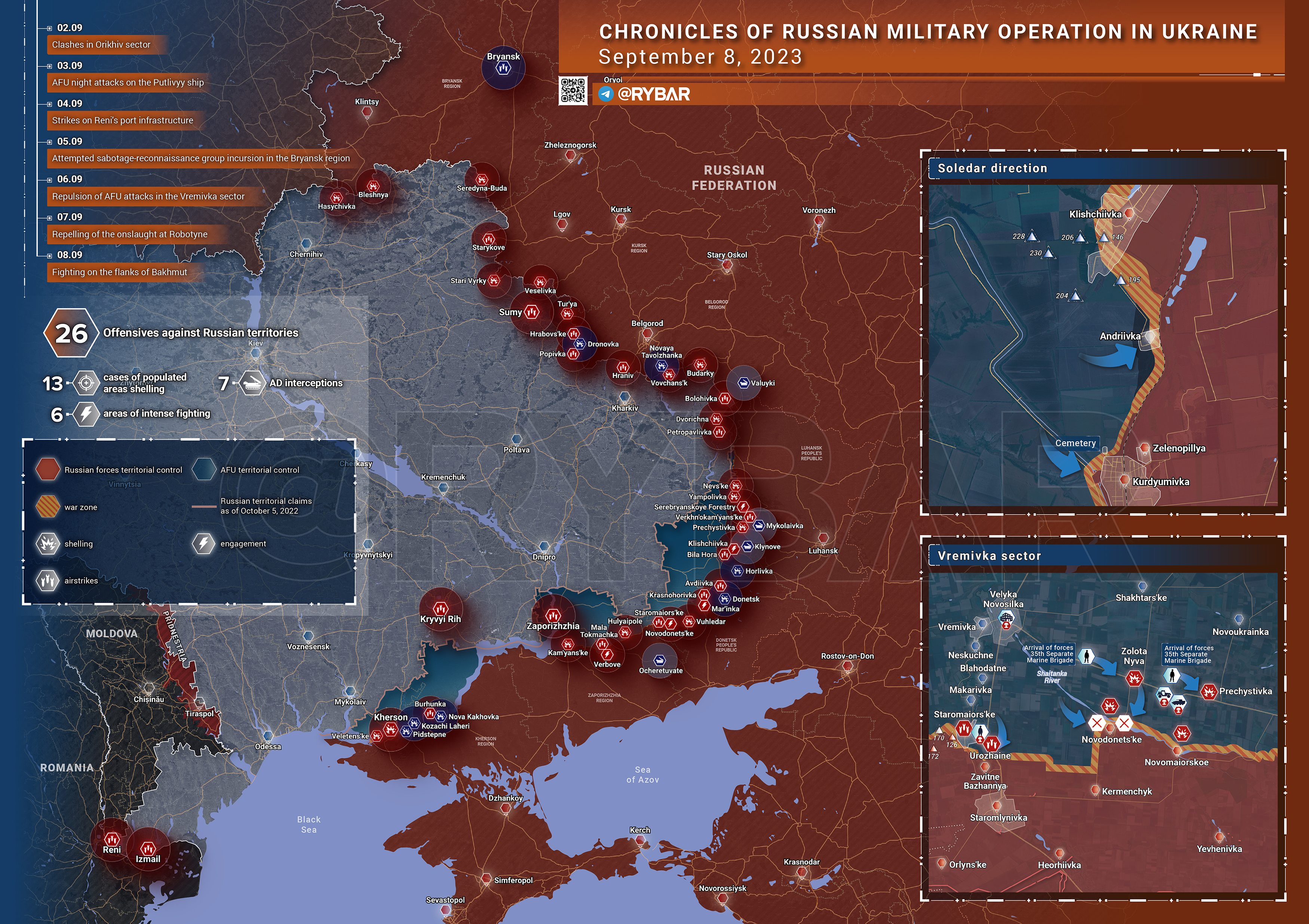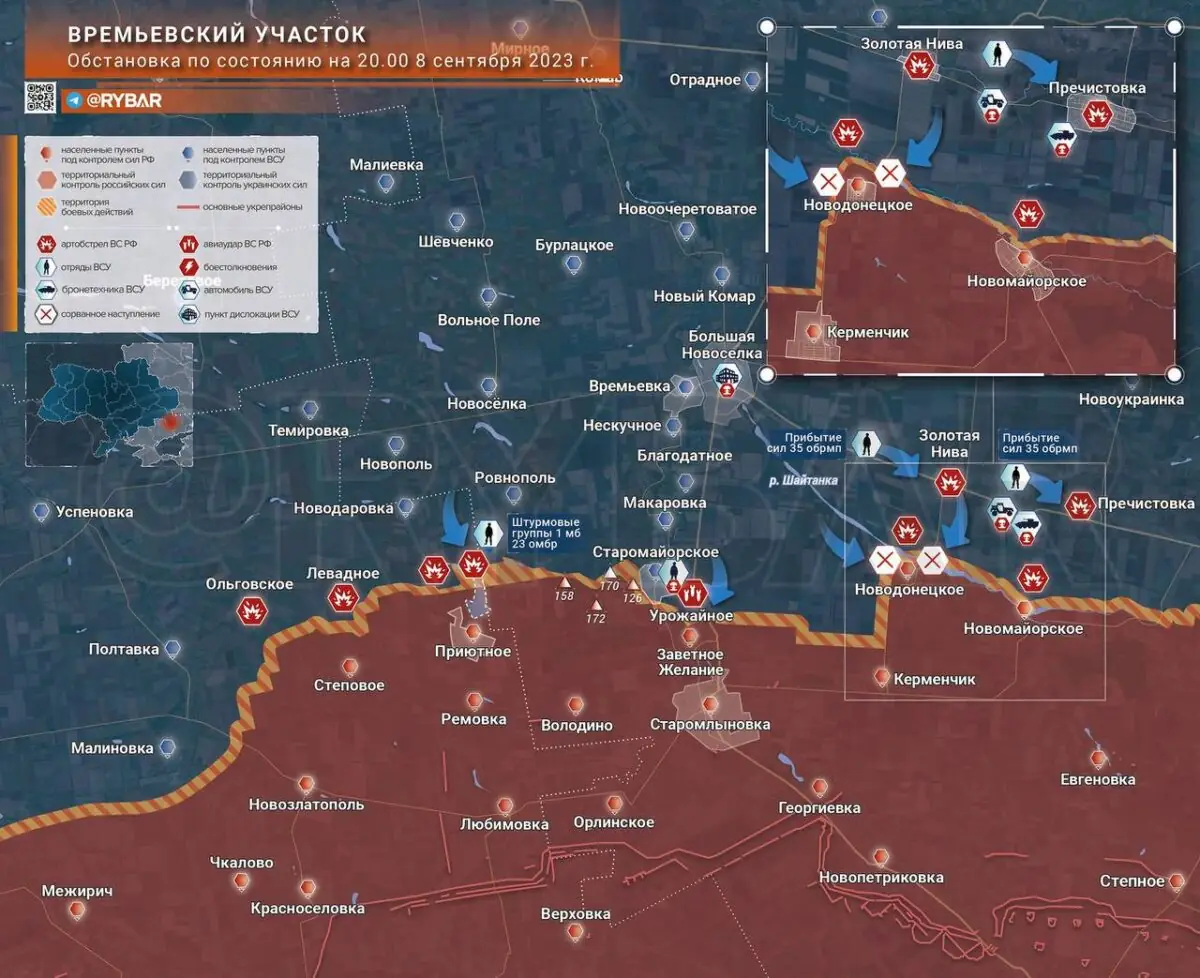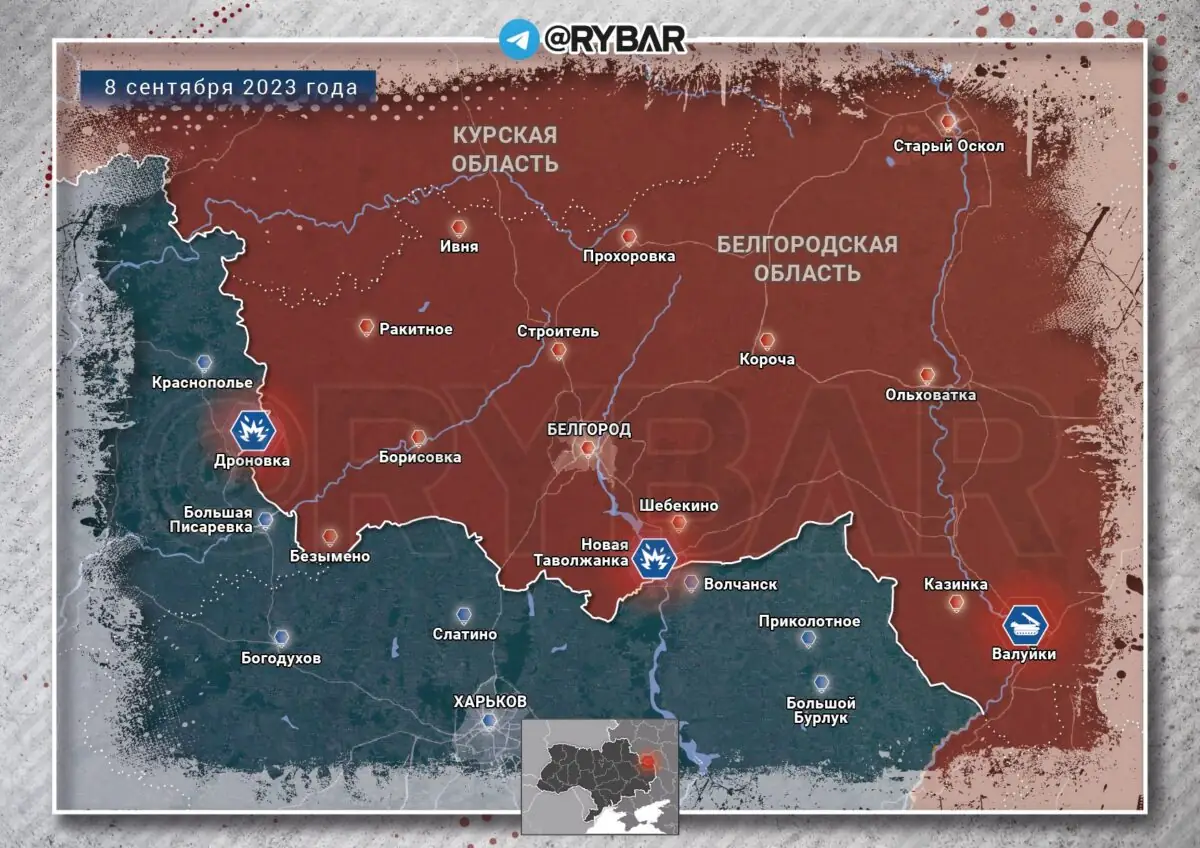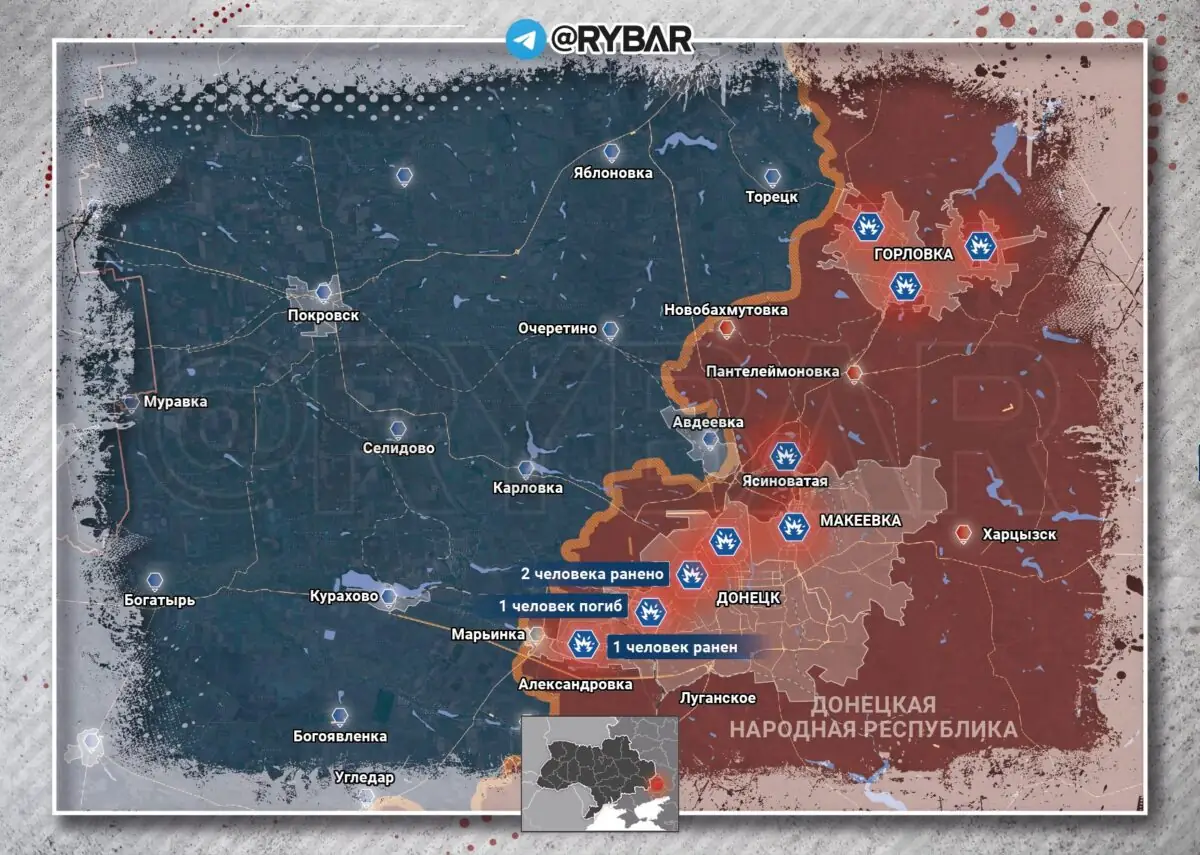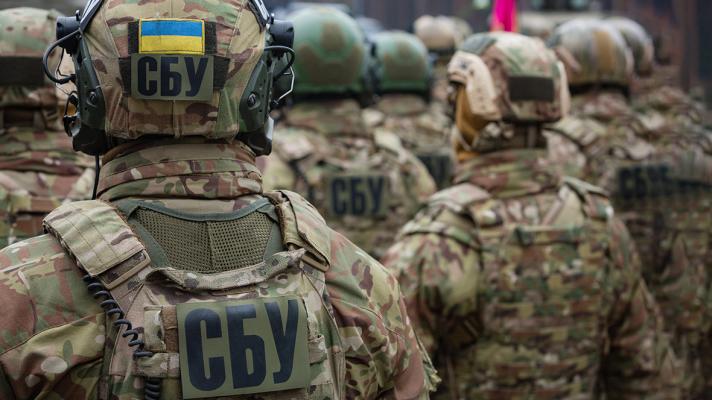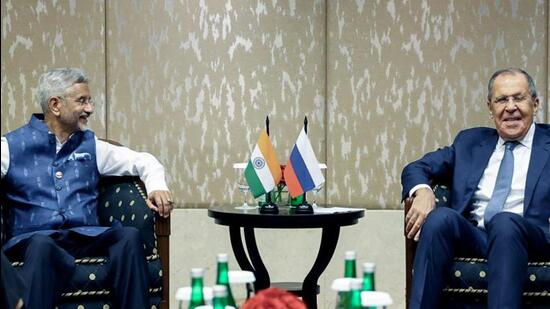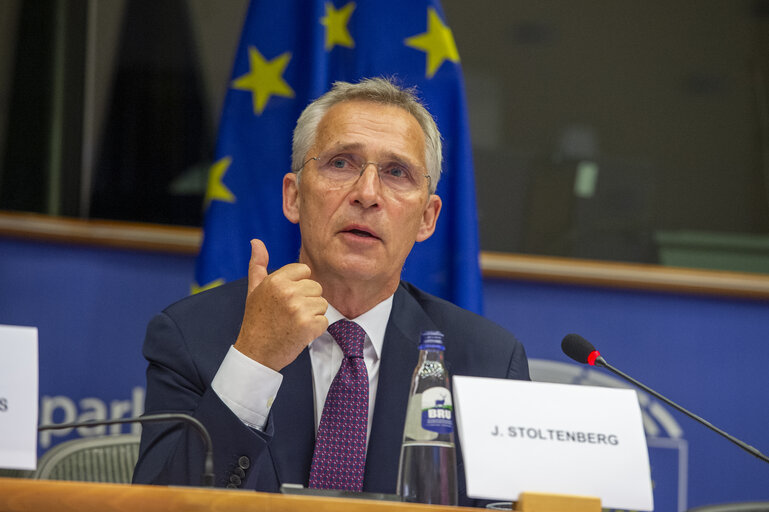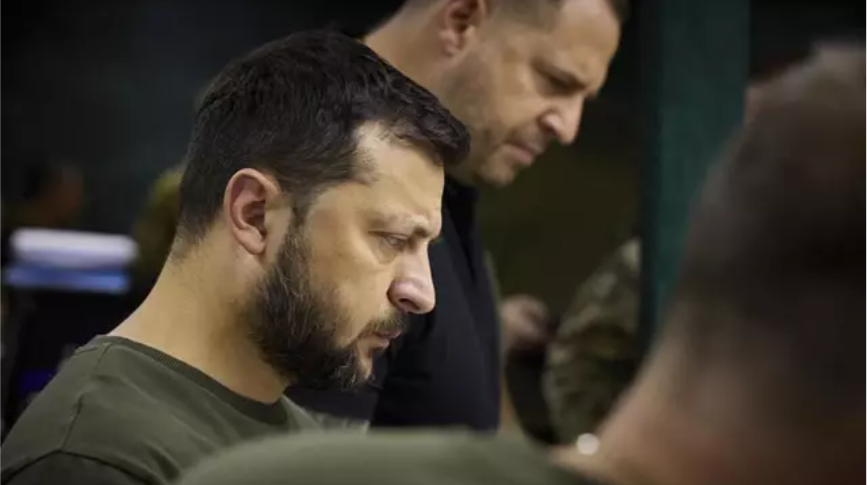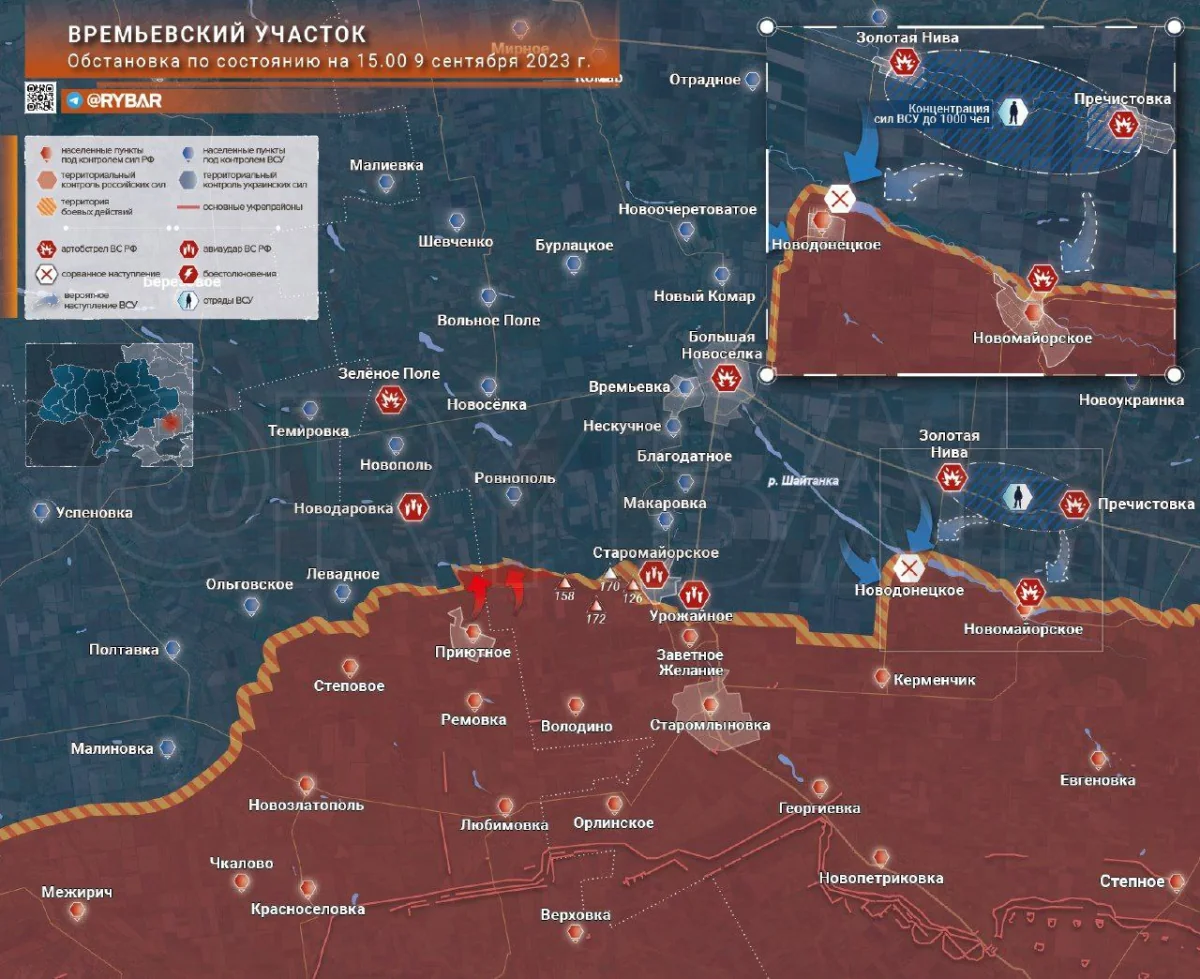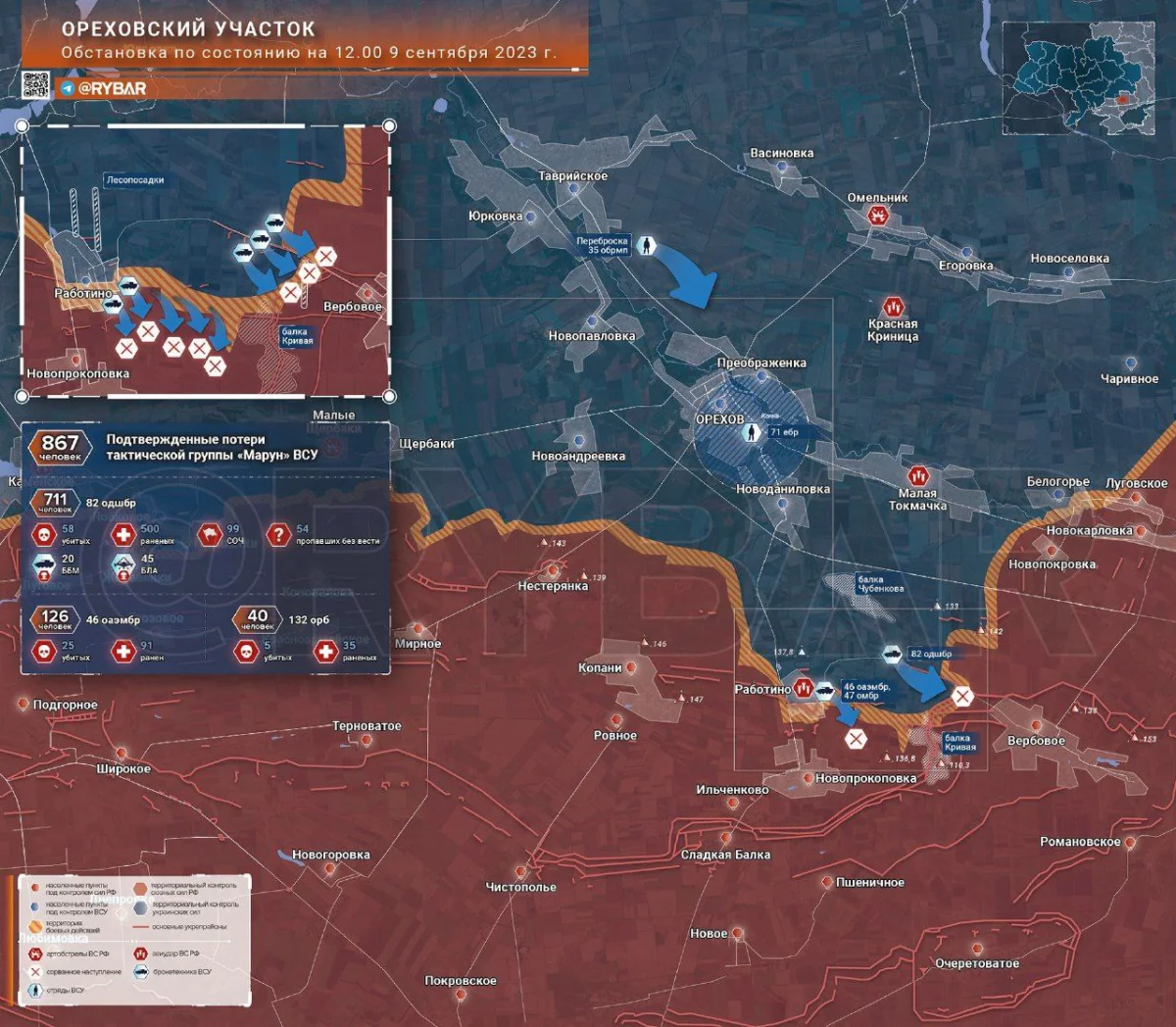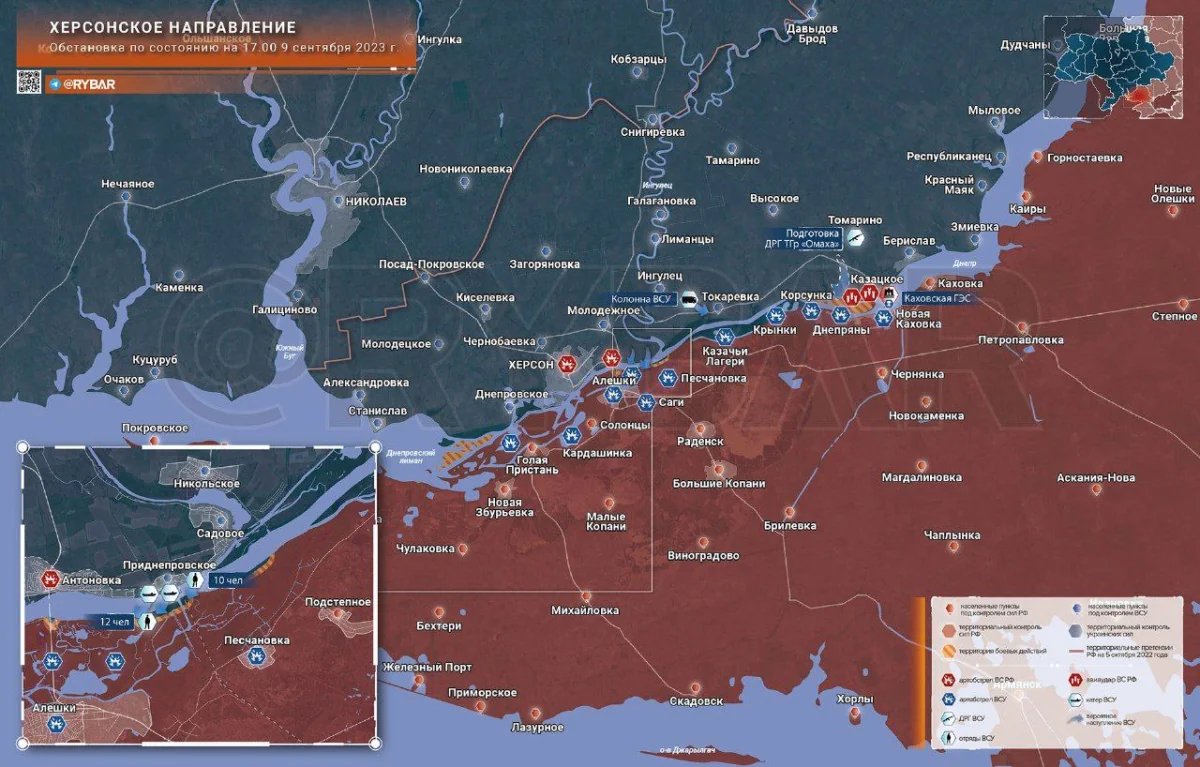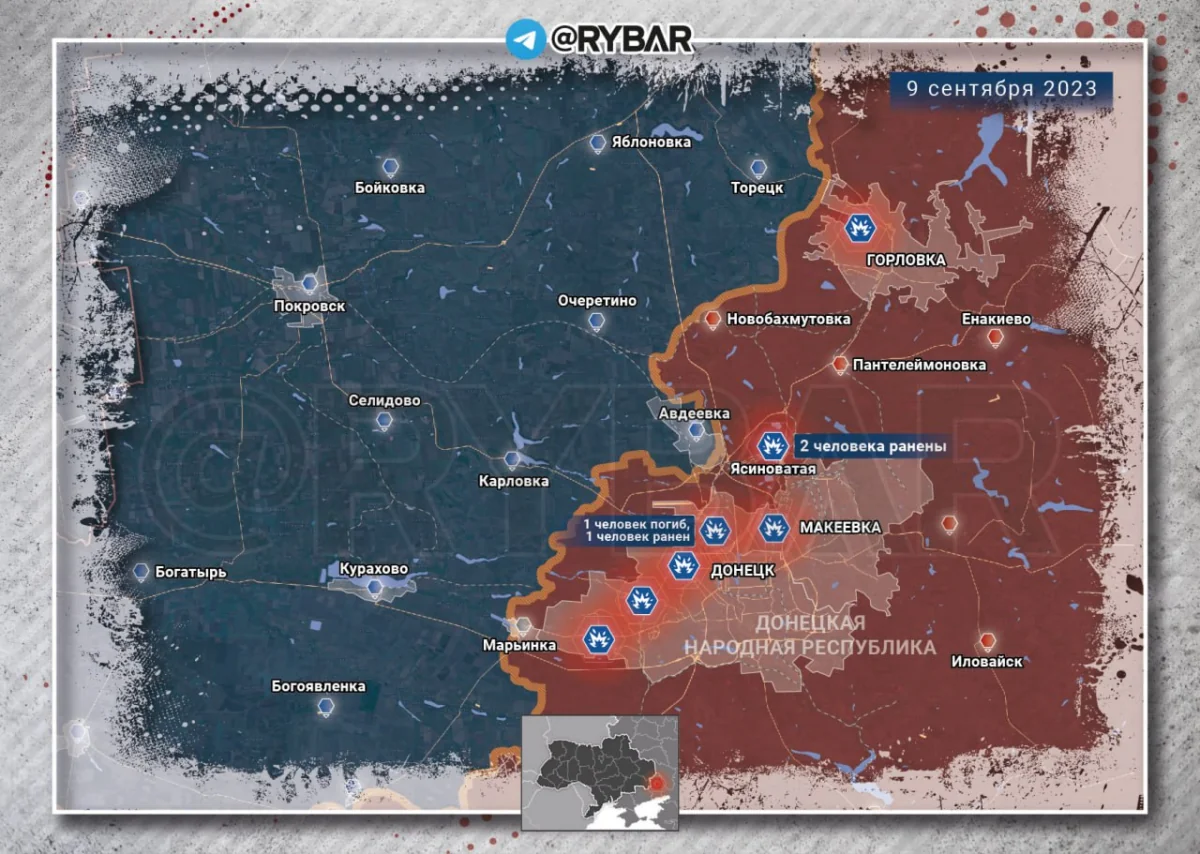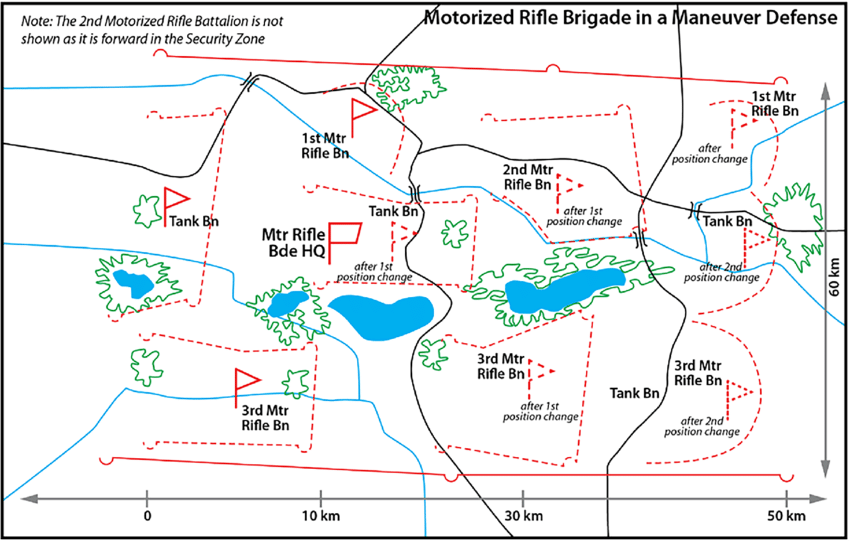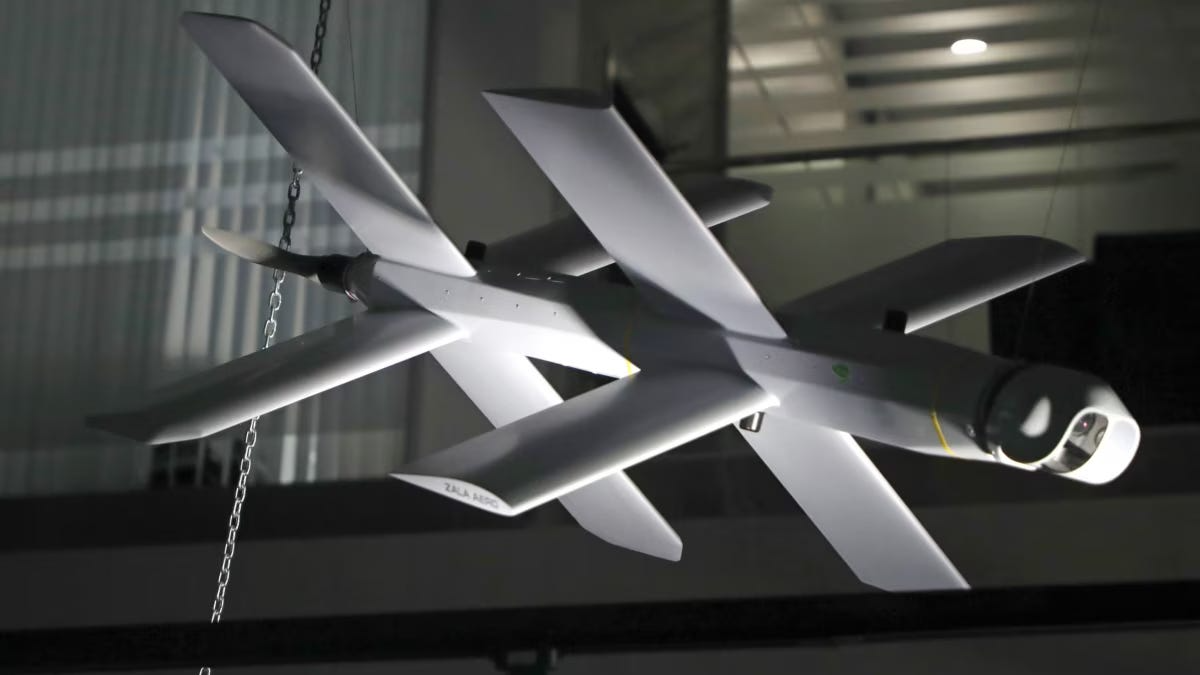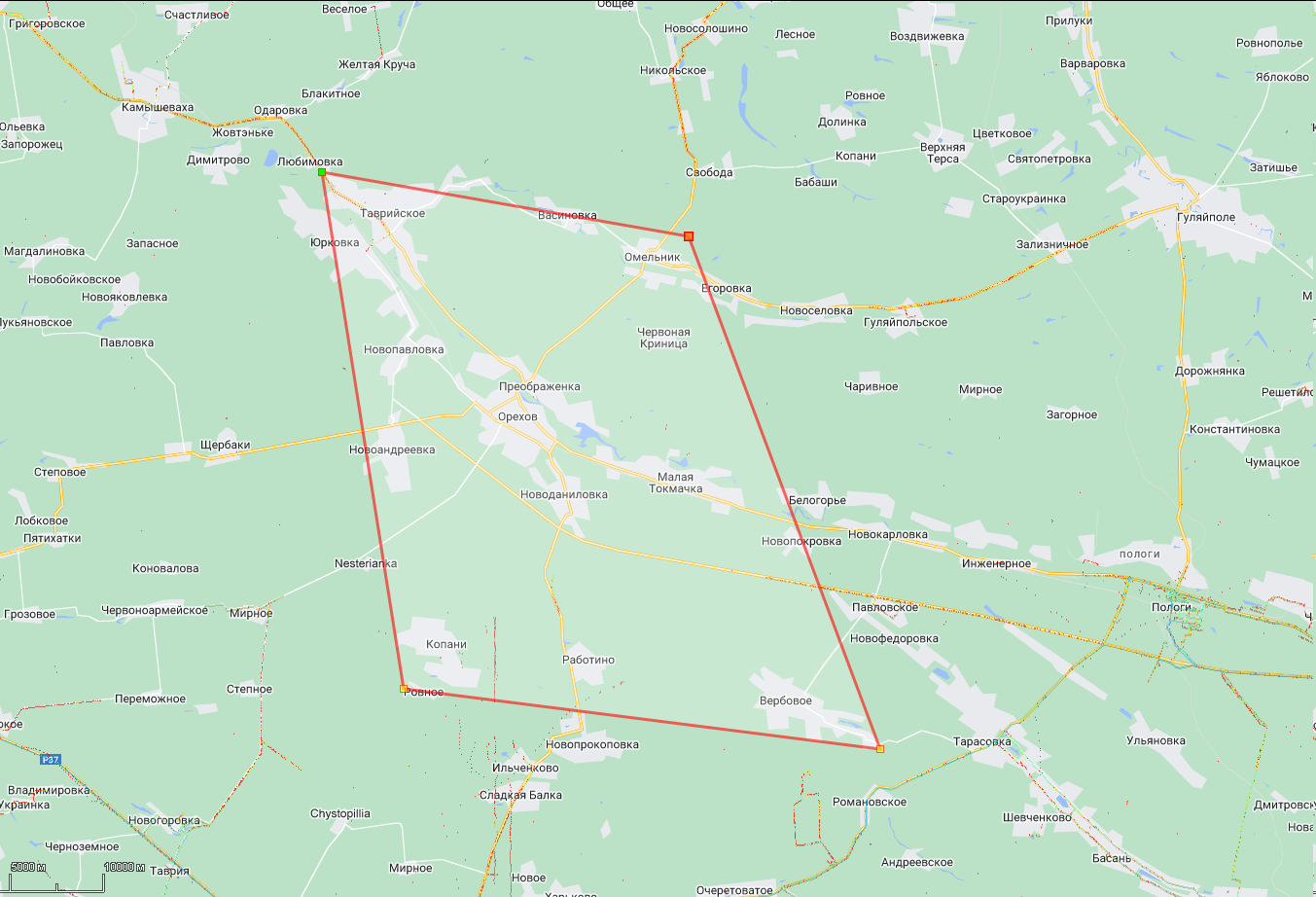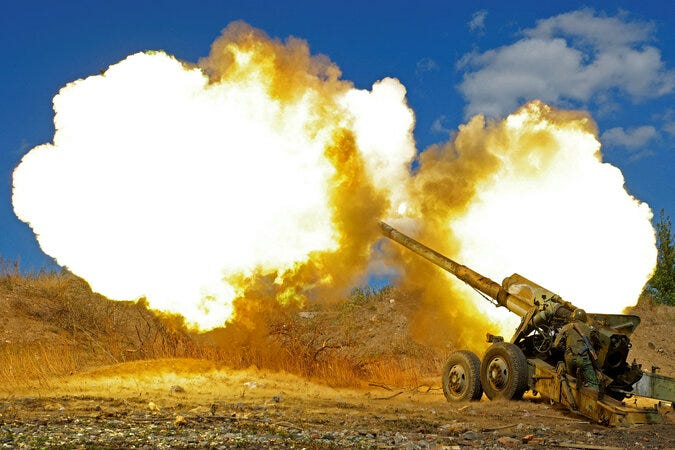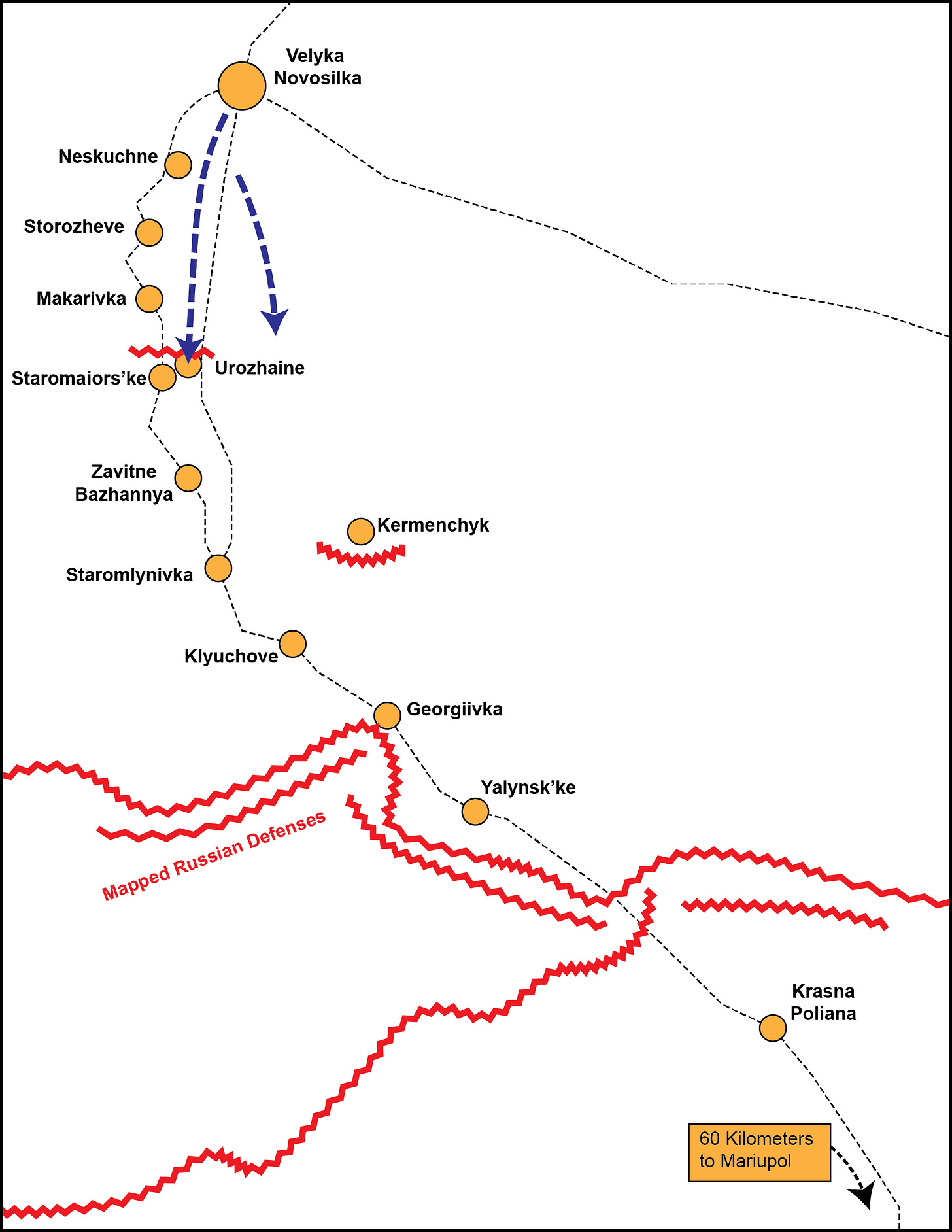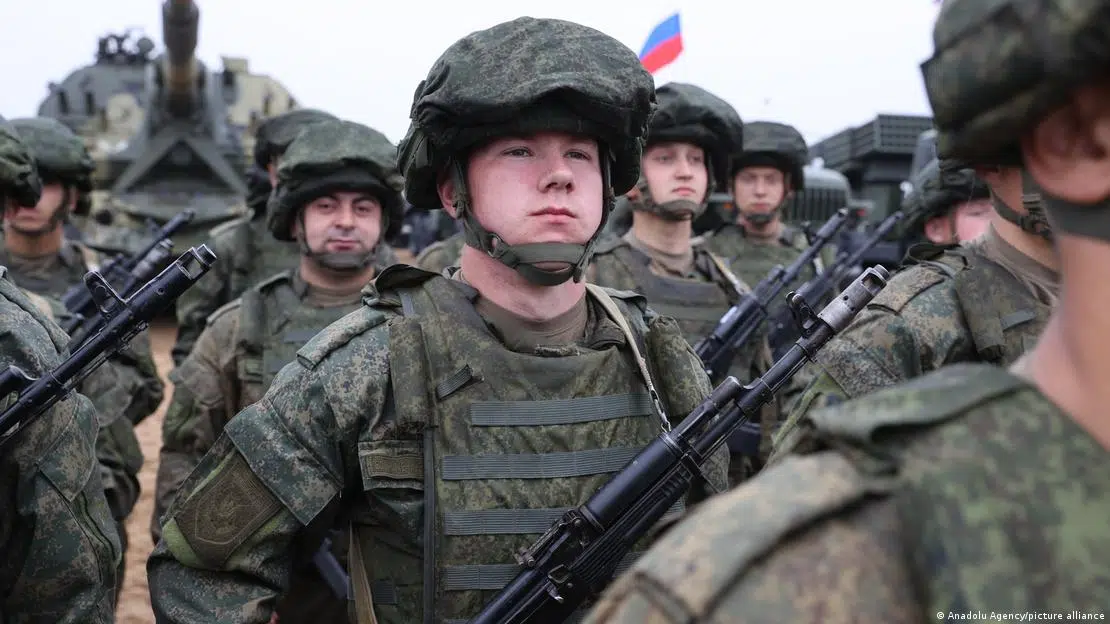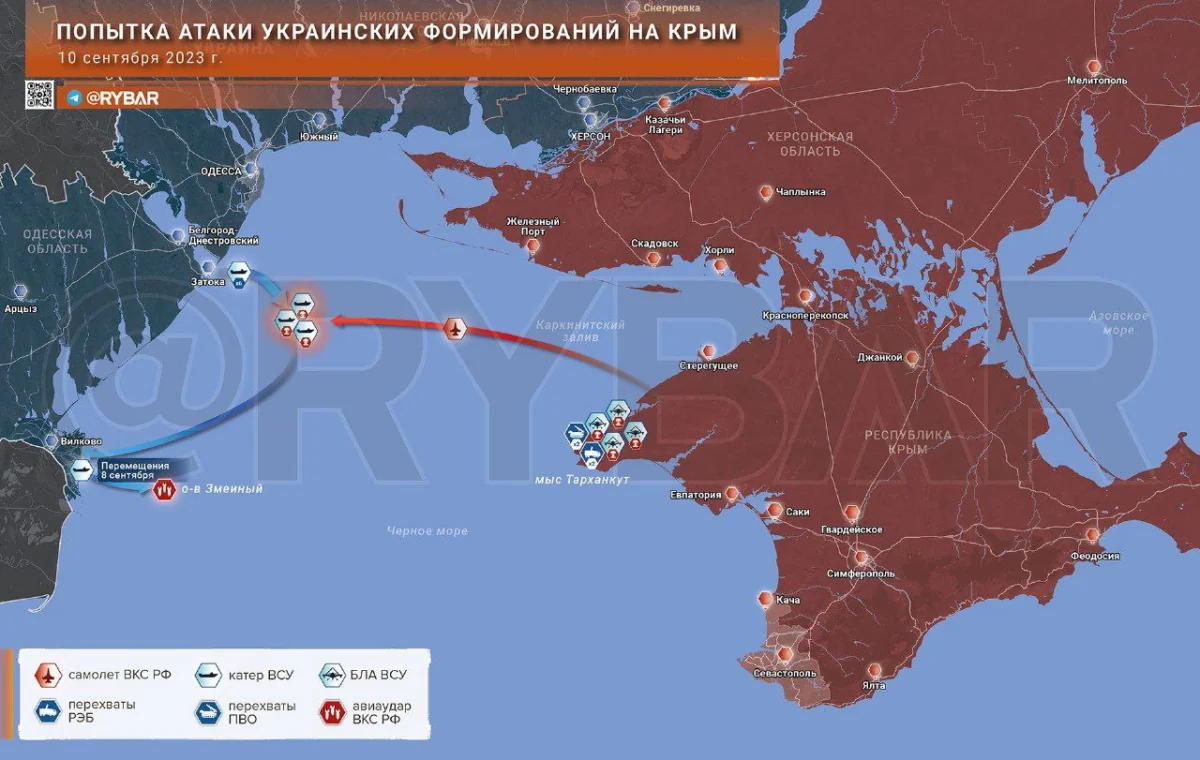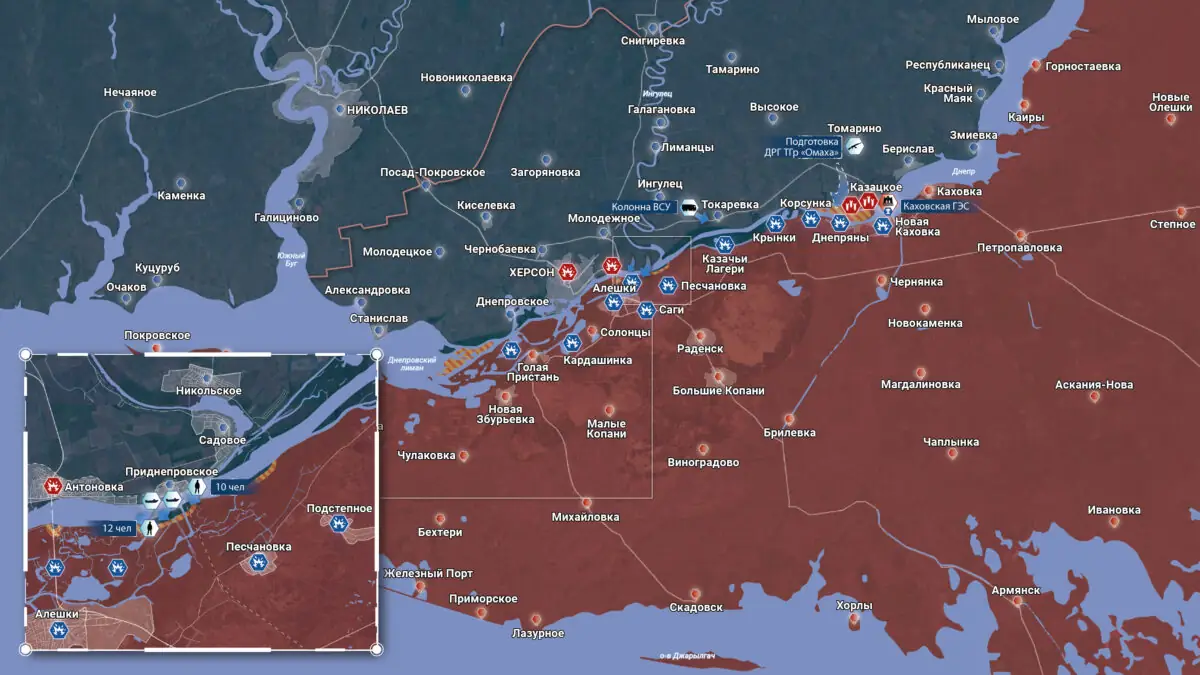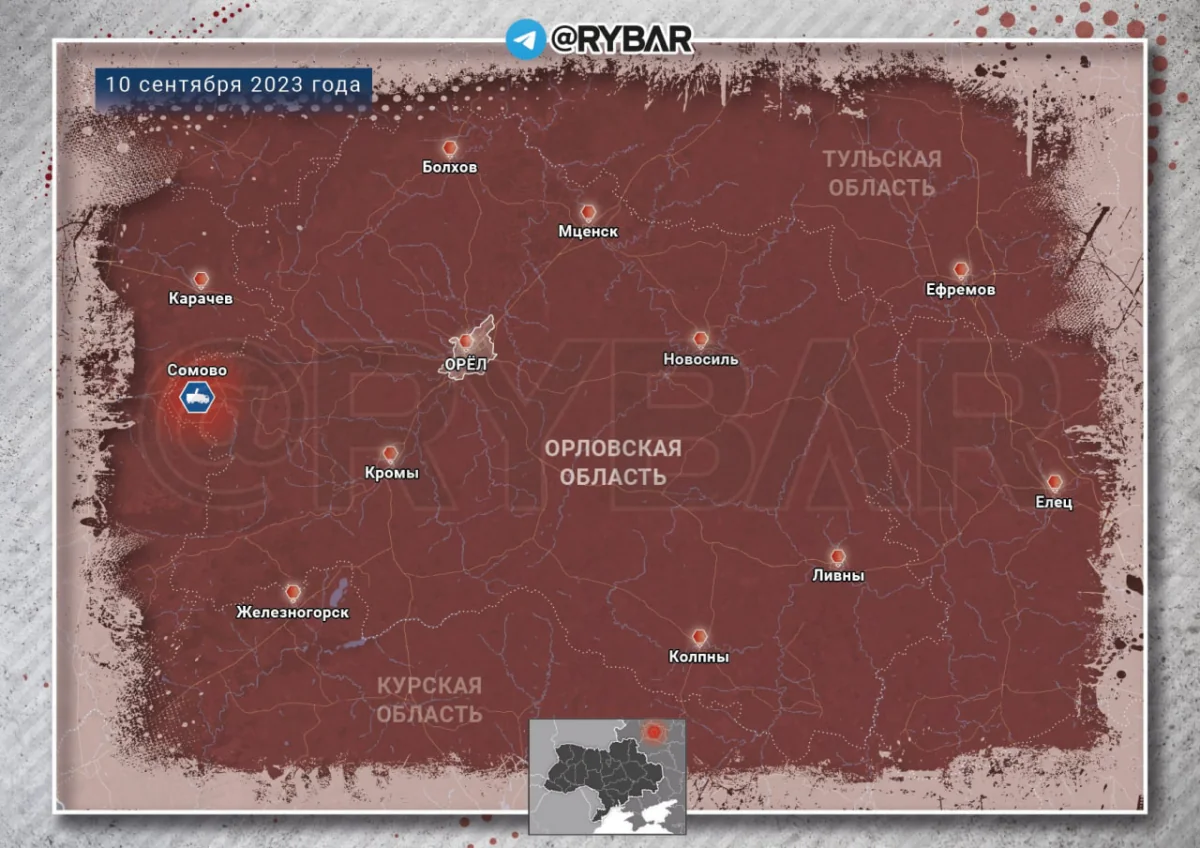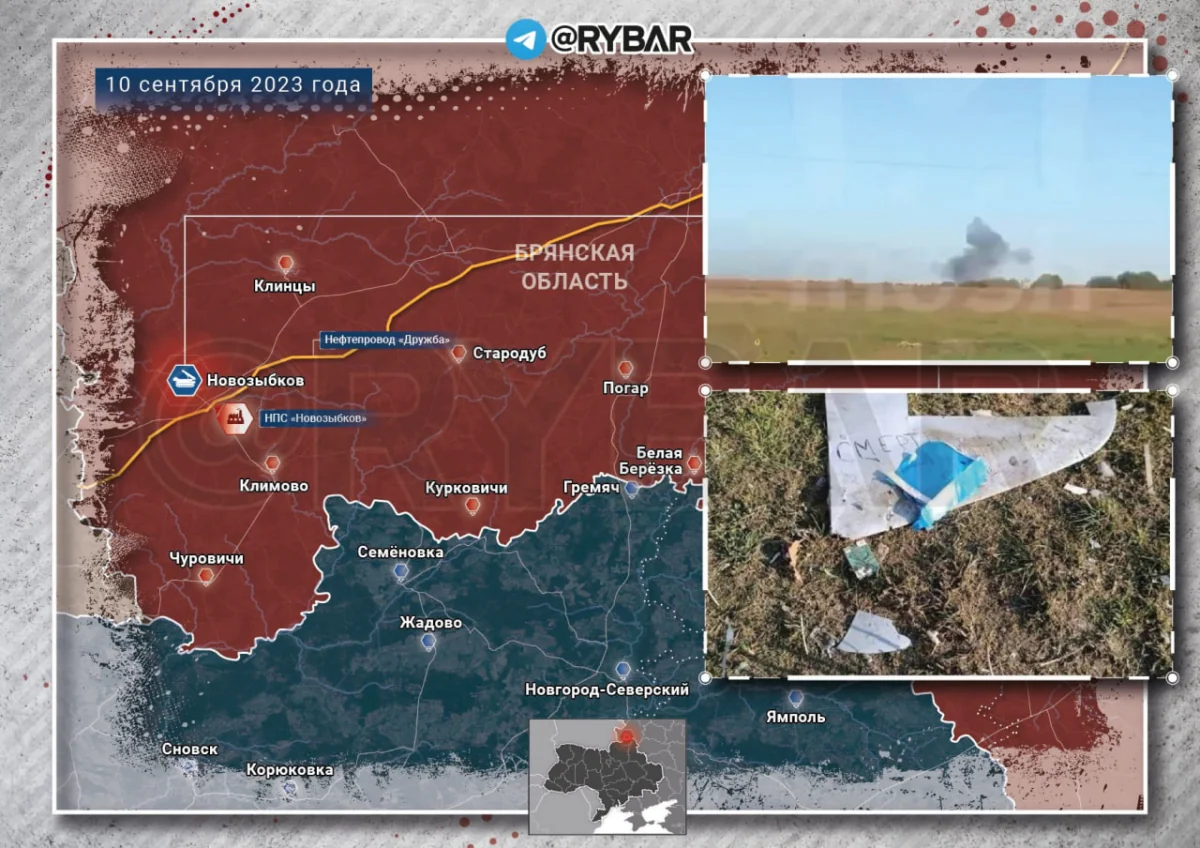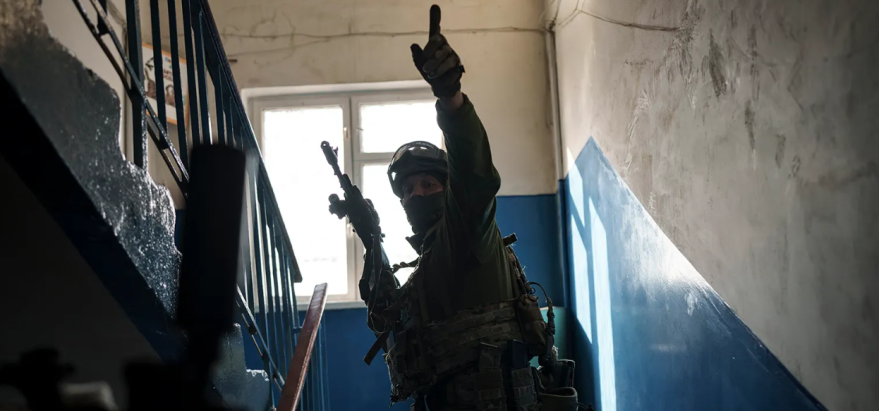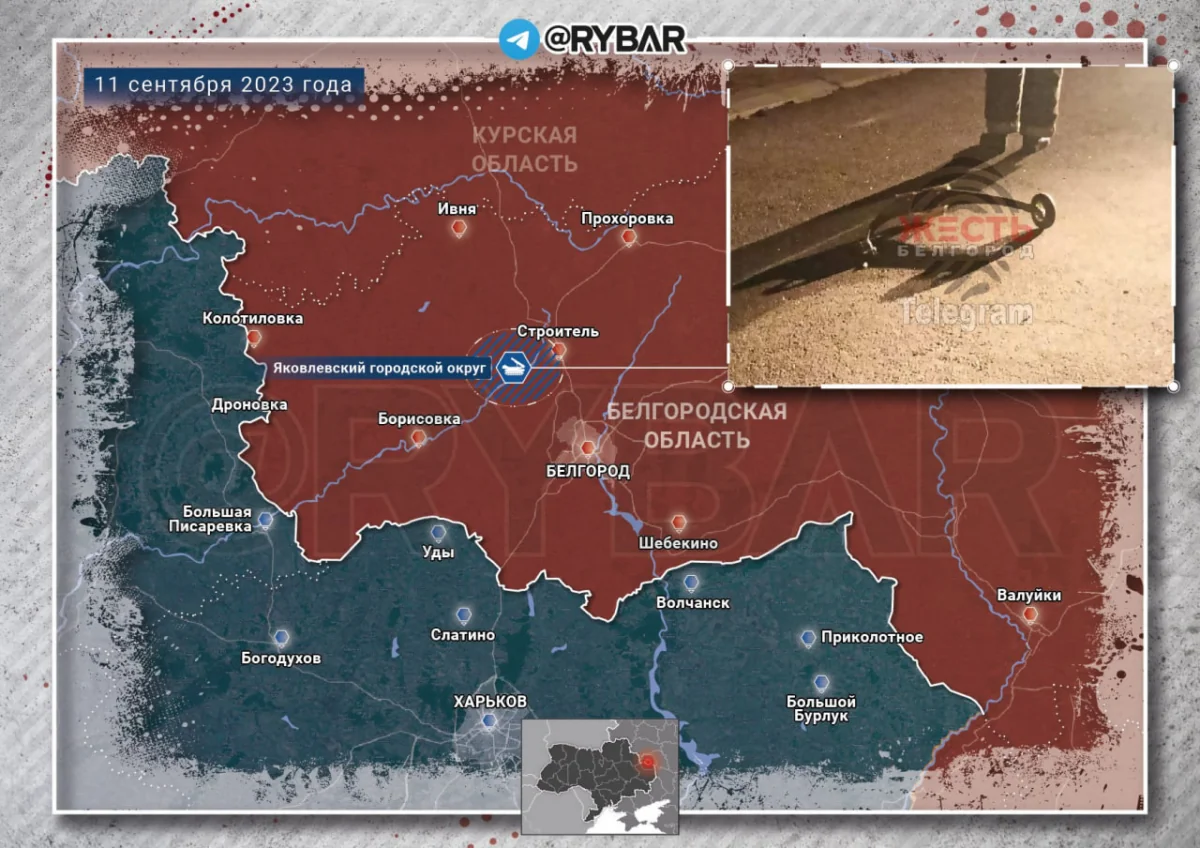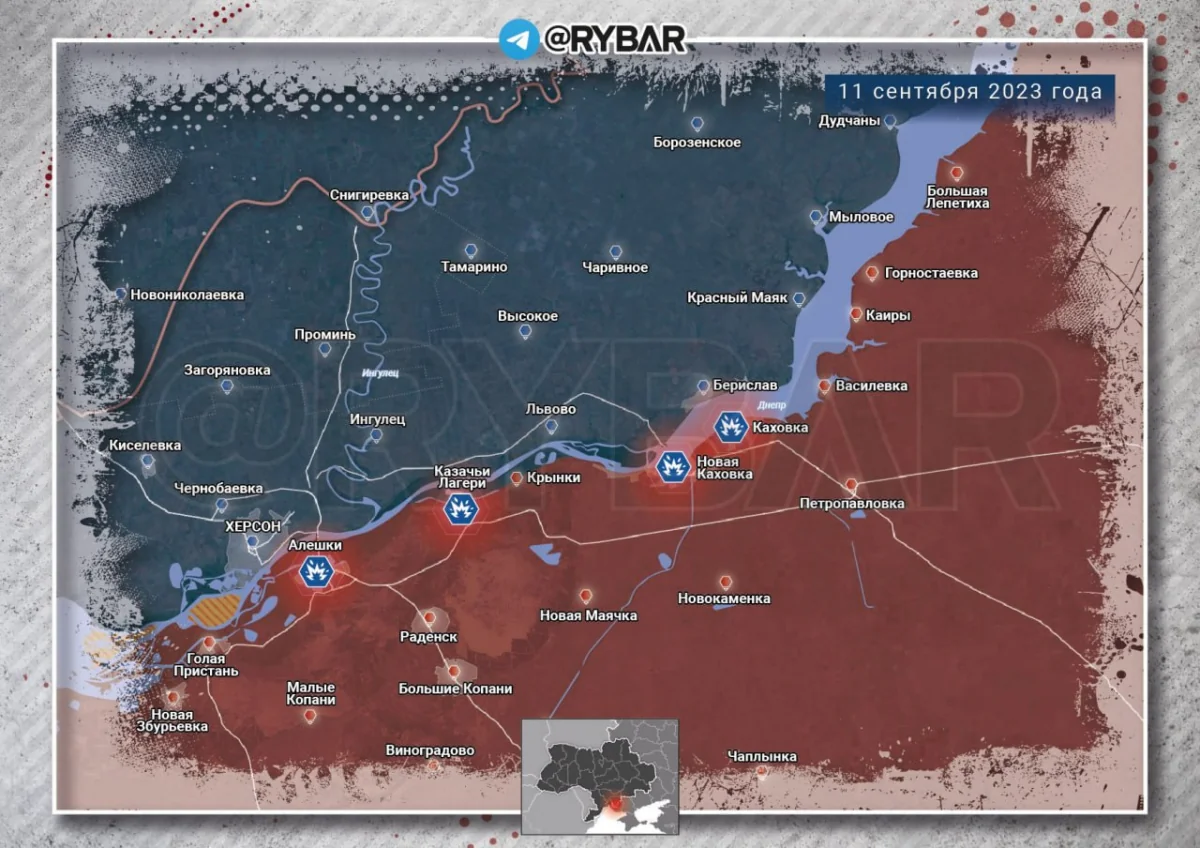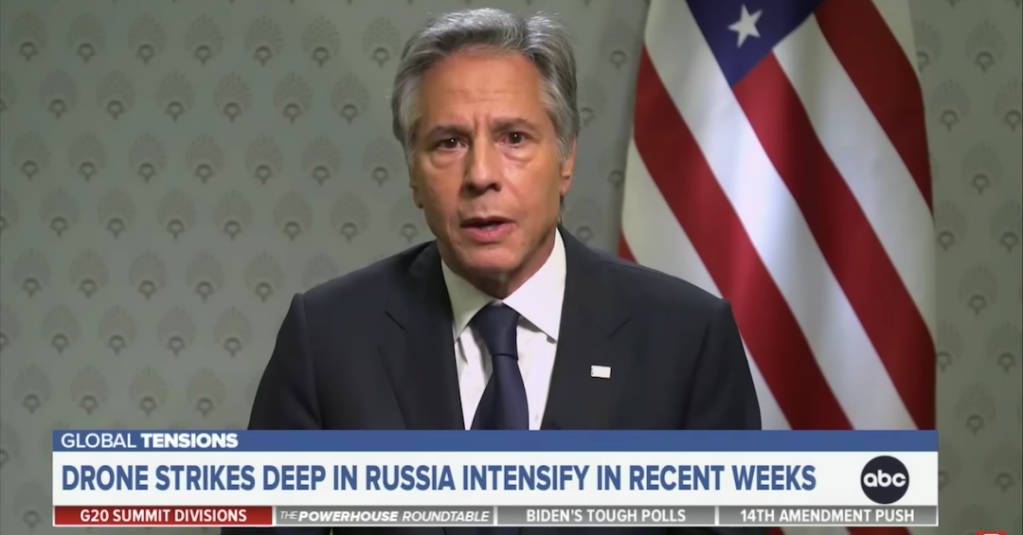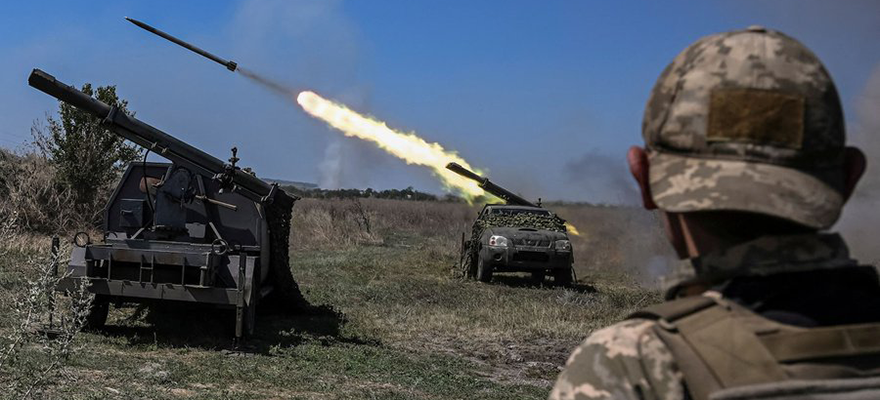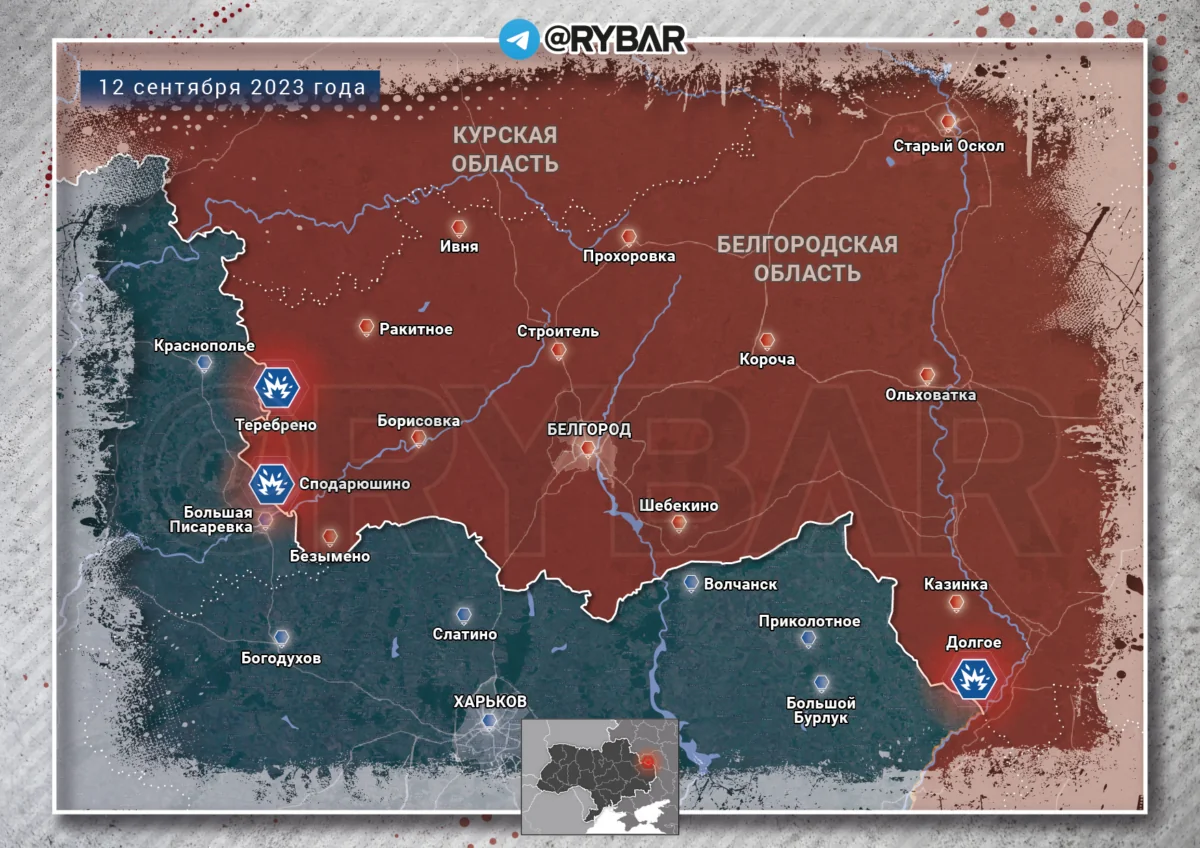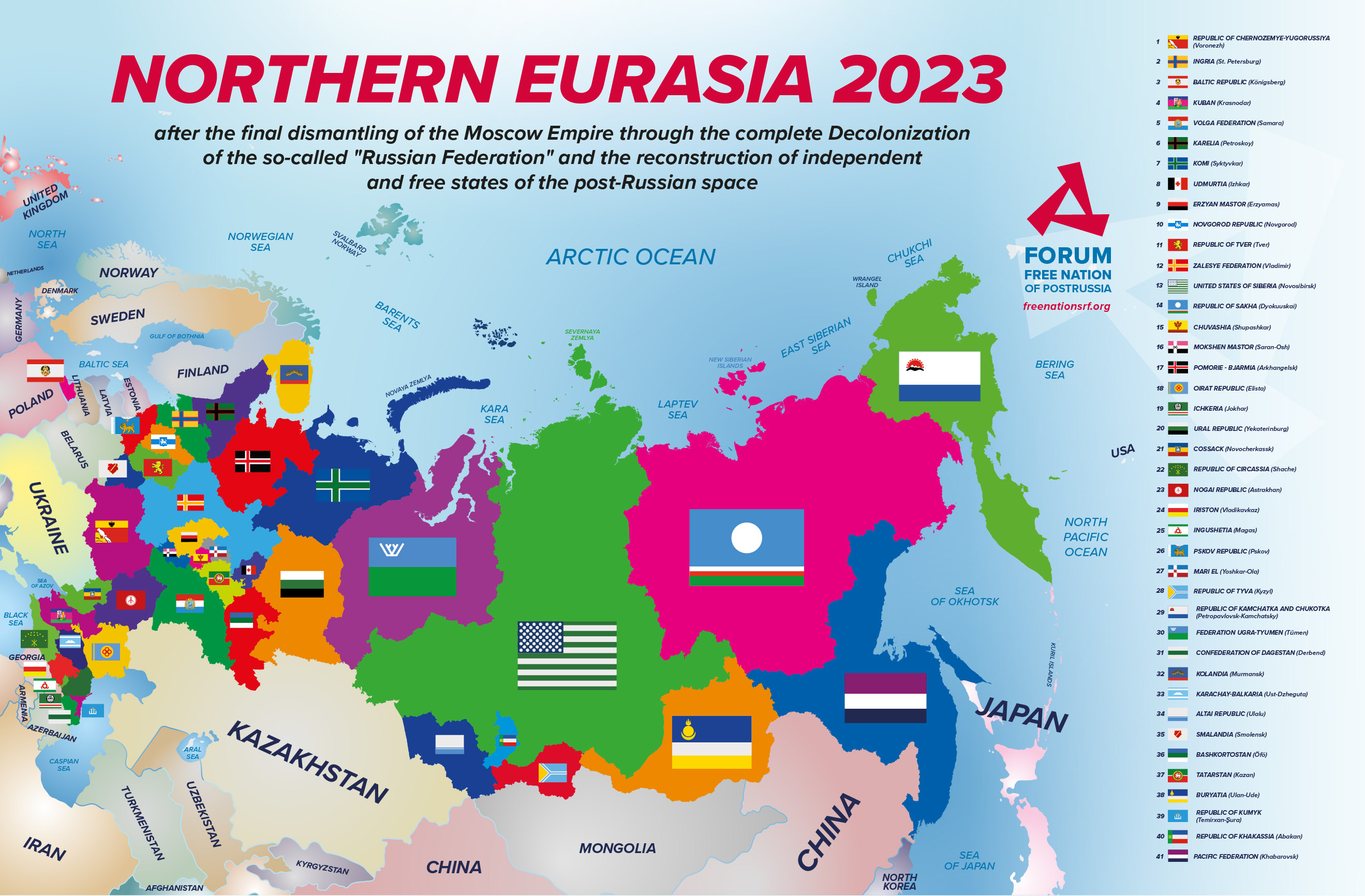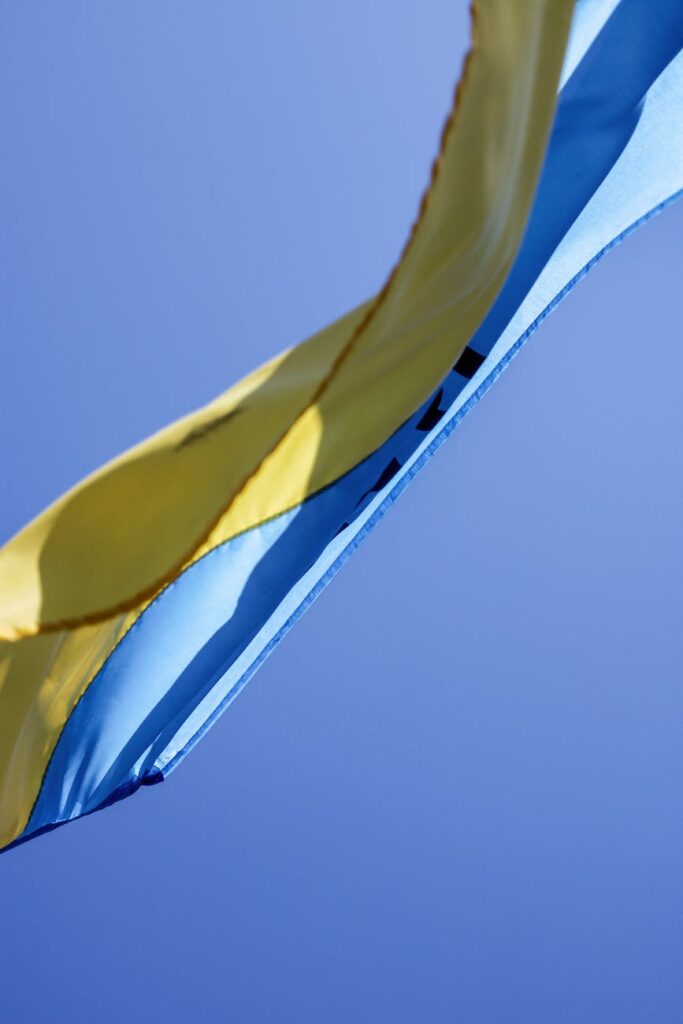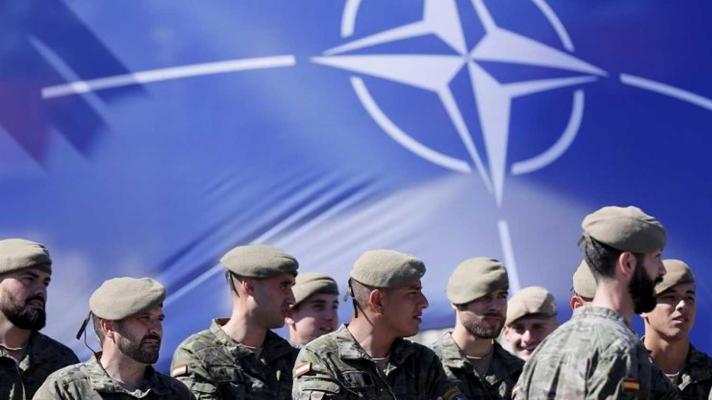POSTED BY @NSANZO ⋅ 09/07/2023
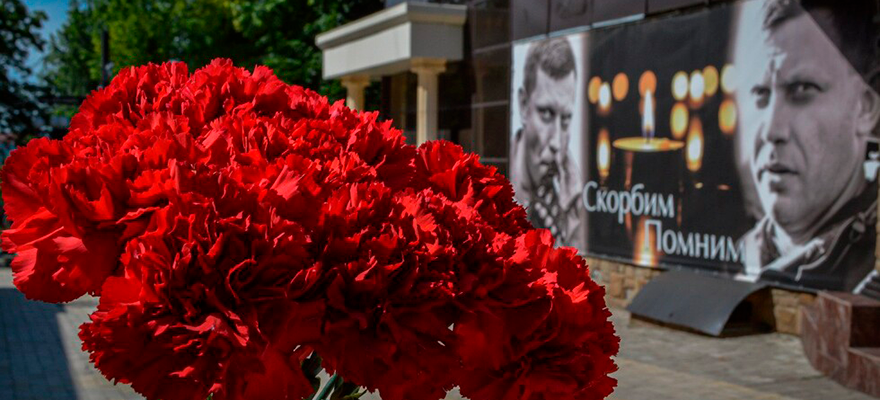
The Russo-Ukrainian war that began in February 2022, partly on top of the one that began in 2014, has not only increased the extent and intensity of the violence, but has also made the Ukrainian question one of the major issues on the international political and media agenda. . In addition to causing a huge flow of military, economic and financial assistance to Ukraine, the Russian invasion has revealed everything that had to be kept quiet during the Donbass war. This is the case of the Ukrainian attitude towards the Minsk agreements, which for seven years were "the only viable alternative" to resolve the conflict. The Russian, Ukrainian and European authorities agreed on this in their public statements.
The arrival of Russian troops on Ukrainian territory abruptly changed the position towards those agreements. Although for a few weeks - specifically those in which Ukraine pretended to discuss a peace agreement with Russia - the demand to return to the borders of February 23, 2022 was maintained and some international representative demanded Minsk's compliance, the agreements completely disappeared from the speech with the breakdown of negotiations in Ankara. Since then, the Ukrainian narrative has come to adopt the discourse already existing in the past in the United States, which described peace agreements as unfeasible and unnecessary, since they did not resolve the key issue: Crimea. Without pressure from their European allies to maintain the Minsk fiction,
However, the Minsk issue is not the only one where freedom offered by the war between Russia and Ukraine makes it possible to bring to light aspects that in the past had been kept hidden, partly thanks to the collusion of the international press, which since the Maidan victory has always chosen not to ask uncomfortable questions to the Ukrainian authorities. One of the aspects that now have a place in the world press, which has sometimes treated them with the triviality typical of someone who has ignored for eight years the suffering of the population subjected to a war and an economic blockade, is that of selective assassinations. . Since the recovery of the territories on the right bank of the Dnieper and the Russian-controlled parts of the Kharkiv region, various media have already referred, generally in legitimizing terms, to the abuses committed against anyone considered collaborationist , a context that lends itself to all kinds of personal and political vendettas that do not seem to bother Ukraine or its defenders excessively.
Recently, there has also been talk, and in this case with some shades of criticism, of the selective assassinations committed by Ukraine. Until the arrival of the Russian troops, any violent death that occurred in the territories of the DPR and the PRL was classified by Ukraine as internal fighting between different terrorist factions.or clashes with Russia. Even the casualties that occurred as a result of the artillery bombardments were blamed on Russia, something that in the Ukrainian discourse did not clash with the classification of those territories as occupied or with the constant declarations about how Moscow handled all the strings. If the press did not doubt that Russia bombed its proxy forces, there was no need to doubt the Ukrainian word in cases where the violent deaths did not occur on the front lines. The perception that every word coming from Moscow - and by extension from Donetsk and Lugansk as well - is part of the Kremlin's propaganda to delegitimize Ukraine and that every statement from Kiev is to be regarded as proven fact precedes the Russian invasion.
The war with Russia not only makes justifiable - at least in political and media terms - the active policy of assassinating Russian or pro-Russian opponents or figures in the Russian-controlled Ukrainian territories or in the Russian Federation itself, but also allows articles to be published that openly contradict the discourse that was maintained during the eight years of war in Donbass. It is no longer necessary to hide the role of the SBU during the 2014-2022 stage or that of the GUR currently. As an article published this week recalls, Kirilo Budanov himself, director of Ukrainian military intelligence, recently stated that it is not necessary for Ukraine to create a structure similar to that of Mossad, "because it already exists." Budanov, who has not hidden that he uses groups from the most extreme right,to liquidate However, until this week, no outlet had discussed the blood revenge tactic more openly than The Economist , which wrote last Monday that “Evgen Yunakov, the mayor of Velikiy Burluk, in the Kharkiv region, he had been identified as a collaborator with the Russians. Caucasus, a Ukrainian special forces commander, and a group of local officers were given the job. His men meticulously watched him for days: when he shopped, when and where he went, his safety. Once they remotely detonated their bomb, they disappeared into safe houses inside the occupied territories. The group would not return to Ukrainian-controlled territory until weeks later, after the town was liberated. Yunakov's body has never been found."
Without nuance of criticism of the assassination of a town mayor applying the justice of the intelligence services, The Economist adds that “in the 18 months of war, dozens of people like Yunakov have been the target of clinical operations throughout the Ukraine. occupied and also inside Russia.” The article, legitimizing with much of the Ukrainian strategy, lends credence to the claim that President Zelensky has ordered to minimize civilian casualties. This option of trusting the word of the Ukrainian president deliberately ignores that those explosive devices have acted in such a clinical way that they have destroyed the families of the people designated to die.
The only case in which some critical tone is shown is that of the death of Daria Dugina, a civilian who had not participated in the war and who was possibly not even the targeted victim in an attack that was probably intended for her father. In any case, the continuation of these murders by the SBU and the GUR, civil and military intelligence respectively, is not in doubt. In the last year and a half it has become apparent that every time Ukraine has referred to Ukrainian partisans acting in the rear has actually described the work of groups linked to military intelligence, in the same way that many of the murders of previous years or the attacks against, for example, prosecutors in Lugansk, are probably due to the SBU. However, the article clashes with the discourse that has been maintained until now in relation to these acts, especially with those that occurred in the years in which the war was geographically delimited in Donbass.
Possibly the most surprising thing about the article published by The Economist this week is the sum of the headline, which openly refers to an “assassination program”, and the image with which it is illustrated: the place in the center of Donetsk where Alexander Zakharchenko, the first leader of the DPR, died, signatory of the Minsk agreements and assassinated on August 31, 2018. A quick review of the reactions of the parties and the international press at that time recalls that Russia quickly accused Ukraine of having committed a terrorist act. A bomb had exploded when the door of the establishment was opened where Zakharchenko and other members of the Oplot organization were preparing to pay homage to the Russian singer Iosif Kobzon, who had died the day before. Ukraine, for its part, saw the hand of Moscow behind the murder, a theory that was transferred without great difficulty to the entire Western press, who gave a voice to who should always have been considered one of the possible suspects in the crime.The BBC , for example, stated at the time that “a spokeswoman for the Ukrainian security service, Yelena Gitlyanskaya, rejected Moscow's accusations. She claimed that the assassination was the result of "infighting... between the terrorists and their Russian backers."
The Economist quotes Valentin Nalivaychenko, head of the SBU during several of the years of violent deaths in Donbass, describing the timing and logic of the assassination program . “In modern Ukraine, the killings date back to at least 2015, when the national security service (SBU) created a body after Russia had captured Crimea and the Donbass region. The fifth elite counterintelligence directorate created a sabotage force in response to the invasion. Afterwards he focused on what he euphemistically described as wet work ”.
No wonder the date 2015 is mentioned. That was when, fearing a collapse of its military forces, Ukraine was forced to sign the Minsk accords, that peace process that Kiev now admits it never intended to pursue. Large-scale military operations had ended and with them the possibility of defeating the People's Republics militarily. Hence, Ukraine sought alternative ways to destroy the rebellion in Donbass: maintaining pressure with bombardments of the front areas, an economic blockade against the civilian population, and selective assassinations against chosen people. “We reluctantly came to the conclusion that we needed to eliminate people,” says Naliaychenko, then head of the SBU, who cynically asserts that “we had to take the war to them”.anti-terrorist operation , which quickly escalated into outright warfare. The population lived that summer without a water supply and soon saw Ukraine stop paying salaries, pensions and social benefits while trying to besiege Donetsk, Lugansk and Gorlovka, the three big cities still under DPR and PRL control. None of this had achieved the objective of forcing Donbass to surrender to Ukraine nor had the political problem been resolved.
The decision to stage targeted killings “came when Ukraine's then leaders decided that the policy of jailing collaborators was not enough. With this argument, Nalivaychenko implicitly admits something that kyiv has denied since 2014, that there was a part of the population favorable to the People's Republics and against Ukraine. "The prisons were overflowing, but few people were deterred," says The Economist without explaining the logic of trying to discourage the population of the part of Donbass under Ukrainian control through the political assassination of leaders of the People's Republics.
Faced with the violent deaths that occurred throughout those years in Lugansk, much more unstable and with factions openly at war with each other, certain murders that took place in Donetsk always seemed to be the work of the secret service that benefited most from those deaths. Destabilizing the political and economic situation has always been Ukraine's strategy since the summer of 2014, but especially since the signing of the Minsk agreements. Eliminating military leaders also favored military destabilization. Among these murders, three stand out, which are also the same ones mentioned, although without clearly adjudicating, in The Economist article : Arsen Pavlov, Motorola ; Mikhail Tolstyj, Givi and Alexander Zakharchenko, Batya. In the case of the latter, Ukraine had eliminated one of the people with whom it had promised to negotiate in the Minsk format.
But if Kiev's goal was to deter the population, the acts had the opposite effect. Tens of thousands of people took to the streets of Donetsk to pay their respects to these three figures and, above all, to show their rejection of Ukraine while Kiev insisted that they were terrorist acts committed by Russia and the press legitimized the speech by publishing without critical nuance or context the statements of the SBU, which he now subtly points to as the perpetrator of the facts.
https://slavyangrad.es/2023/09/07/28089/#more-28089
Google Translator
******
Chronicle of the special military operation for September 6, 2023
September 6, 2023
Rybar
Last night, Russian troops attacked the port infrastructure of the Odessa region with kamikaze drones : in Kiliya, a grain terminal and fuel tanks at a local oil depot were hit. Explosions also thundered in Kiev , but there is no exact information about the targets hit.
APU fired a rocket from the Druzhkovka area at the market in Konstantinovka : 17 people were killed, more than 30 were injured. The Ukrainian authorities tried to blame the Russian Armed Forces for the attack, but the direction of the missile’s flight, established, among other things, by georeferencing the terrain and reflecting ammunition on the roof of one of the vehicles, suggests otherwise.
Fierce fighting continues along the entire line of contact on the fronts. In the Vremievsky sector, Russian troops repelled regular enemy attacks near Novodonetsky and Novomayorsky . And near Orekhovo , units of the RF Armed Forces continue to hold the southern outskirts of Rabotino , preventing the Armed Forces of Ukraine from establishing full control over the village.
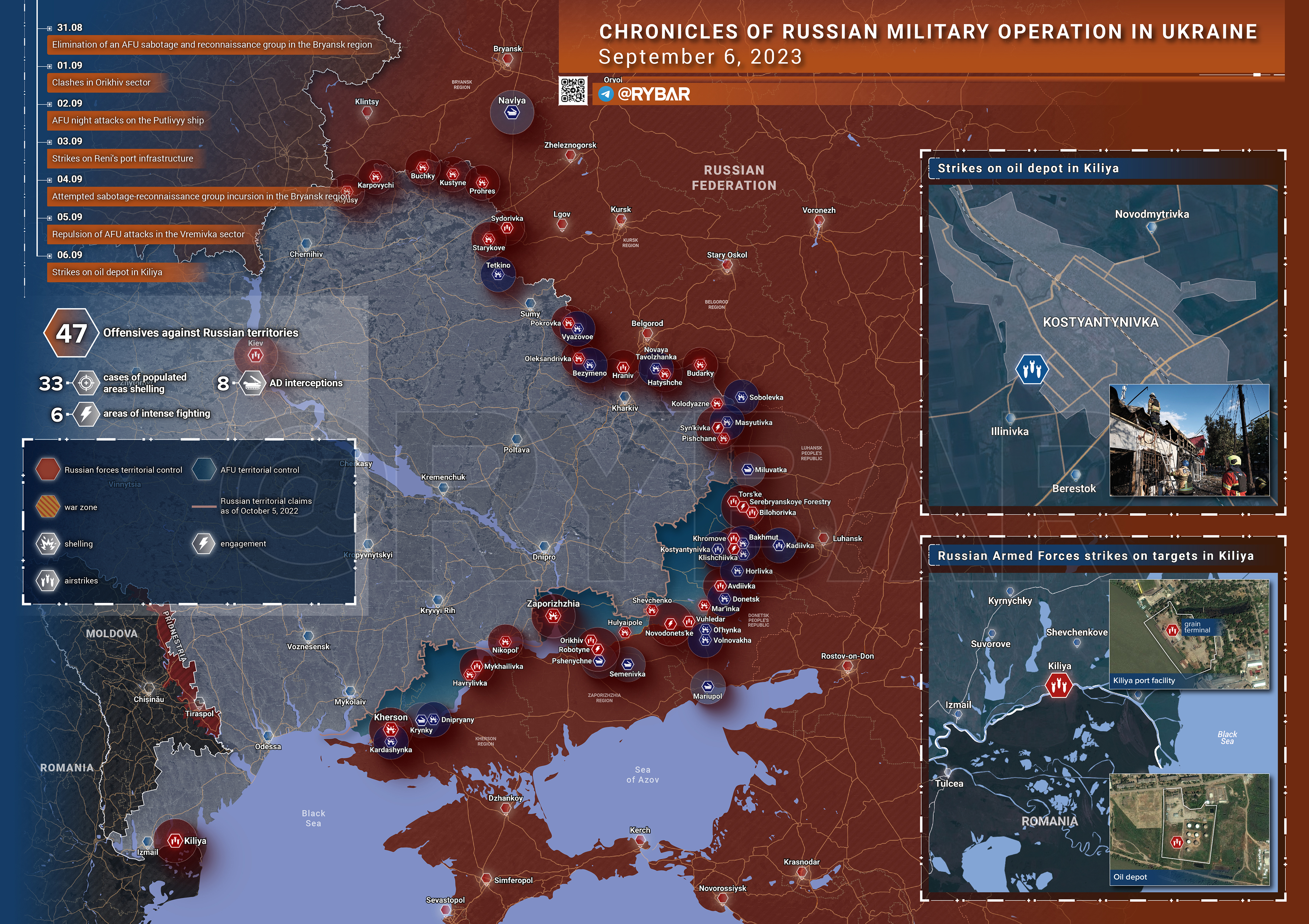
Russian Armed Forces strikes on the port infrastructure of Kiliya

During the night, Russian troops again struck targets in the Odessa region with Geran kamikaze drones . Several arrivals fell on the infrastructure in the port of Chilia on the Danube. According to open sources, it was possible to geolocate the destruction of fuel tanks by drones at the local oil depot, as well as the Davos-Agro grain terminal.
The Ukrainian authorities also reported damage to elevators, administrative buildings and agricultural enterprises in the Izmail region . In turn, the Russian Defense Ministry announced the defeat of the training bases of sabotage groups of the Armed Forces of Ukraine.
Over the past months, the Russian Armed Forces have repeatedly hit the Danube ports in order to both minimize their use for attacks in the Black Sea and suspend the import and export of goods after the official termination of the “grain deal”.
The previous raid took place on the night of September 3-4: then warehouses and production facilities in Reni and Izmail were hit . Judging by the pace and frequency of strikes, objects on the Danube will become targets of Geraniums or cruise missiles more than once in the near future.
Arrival of a Ukrainian rocket at Konstantinovka
This afternoon, footage appeared of a rocket arriving at the market in Konstantinovka , located in the occupied part of the DPR . According to the video that appeared on the network, it was possible to establish that the ammunition was launched from the direction of Druzhkovka . The direction of the missile's flight was determined by georeferencing the terrain using existing buildings, including stores, as well as by reflecting the missile on the roof of one of the vehicles.
The Ukrainian authorities almost immediately unfoundedly accused the Russian troops of attacking a civilian object. Nevertheless, the facts speak of the involvement of the enemy in this act of aggression. According to the latest data, 16 people died, more than 30 were injured of varying severity.
The situation on the front line and the fighting
In the Starobelsky direction, fierce battles are going on in the Serebryansky forestry west of Kremennaya . The Russian servicemen managed to beat off several attacks by Ukrainian formations, which had to retreat with losses. There are no significant changes in the Kupyansky sector - the RF Armed Forces confidently hold their previously occupied positions near Sinkovka .
There are no significant changes on the flanks of Bakhmut in the Soledar direction - the Armed Forces of Ukraine continue to attack Russian positions in Kleshcheevka . According to unconfirmed reports, the enemy again conducted a sortie to the southern outskirts of the village, but the RF Armed Forces confidently hold positions in this area.

In the Vremievsky sector, since yesterday, the enemy has continued to activate on the right flank of the defense. From the side of the Zolotaya Niva - Prechistovka line , the forces of the 38th infantry regiment again tried to attack Novodonetskoye and Novomayorskoye . Ukrainian formations lost three armored vehicles and rolled back. According to Voin DV , the Armed Forces of Ukraine are not yet using large forces in rollovers, limiting themselves to maneuver groups. However, massive artillery preparation and accumulation of personnel can serve as a sign of an approaching offensive in this direction.
On the left flank of the RF Armed Forces, artillery strikes were carried out on the enemy's concentration in Urozhainoye and to the east of the village, disrupting the rotation of the Armed Forces of Ukraine. The concentration of TRO detachments continues in the Priyutnoye area , where mutual shelling has been going on for the past few days, as well as in the Olgovskoye and Malinovka areas , which may also indicate that Ukrainian formations are preparing for coordinated attacks.

Fierce fighting continues on the Rabotino - Verbovoye line in the Orekhovsky sector . In recent weeks, control over positions in the village has changed hands for the fifth time. The settlement itself is practically destroyed and for the most part is located in the gray zone. However, the Armed Forces of Ukraine continue to try to advance to the southern outskirts and break through to Novoprokopovka , using the tactics of "meat assault". Last night, Russian units, due to the lack of tactical sense to defend the destroyed houses in Rabotino , retreated to prepared positions on the southern outskirts.
At the same time, the enemy is moving additional units to Verbovoye , clearly hoping that it will be easier to break through to the west of the settlement than to storm the heights in the south near Rabotino. However, night attacks in this direction did not achieve success. Again, heavy losses are reported in the ranks of the 82nd Oshbr.
Shelling of rear territories and residential areas
In the Bryansk region, an enemy drone was intercepted over the Navlinsky district : there were no casualties or damage.
Ukrainian formations launched massive attacks on the border of the Belgorod region . In the Krasnoyaruzhsky district, a power line in the village of Vyazovoe was damaged , and in the Valuysky urban district, one household in Urazovo came under fire . In addition, the RSChS notified about the shelling of the village of Zadorozhny , as well as the villages of Bezymeno , Ilek - Penkovka , Kozinka , Kolotilovka , Novaya Tavolzhanka , Repyahovka , Sobolevka , Staroselye and Terebreno: official information about the destruction and casualties was not received.
In the Lugansk People's Republic , the enemy fired on Stakhanov : one woman was injured.
Today, the Armed Forces of Ukraine again bombed the Donetsk agglomeration throughout the day . As a result of the shelling of Volnovakha , six women were injured, in Donetsk one person was killed, two more were injured. In addition, a woman in Staromikhaylovka and a man in Vladimirovka were injured . In addition, Ukrainian strikes damaged several buildings of administrative, cultural and leisure institutions of the DPR.
In the Kherson region, Ukrainian formations continue to shell settlements on the left bank of the Dnieper on a daily basis. The enemy fired about 40 shells at the residential buildings of Novaya Kakhovka , Podlesnoye , Cossack Camps , Dnepryan , Kardashinka and Kakhovka : there were no casualties among the civilian population.
Political events
On military assistance to the Armed Forces of Ukraine
The United States announced a new, 46 package of military assistance to Ukraine. It does not represent anything interesting, except for 120-mm uranium armor-piercing shells for M1 Abrams tanks, which, apparently, will be transferred to Kiev in the near future. In total, weapons and equipment worth $ 175 million are allocated , and again we note the drop in supply volumes.
The nomenclature, in addition to the mentioned shells, is standard: spare parts for air defense, ammunition for HIMARS, 105 and 155 mm shells, 81-mm mortar mines, TOW and Javelin anti-tank systems, AT-4 grenade launchers, another 3+ million cartridges for small arms, communications equipment, navigation, demolition charges for sappers, spare parts and equipment.
In addition, the leader of the Republicans in the US Senate, Mitch McConnell , said that his party is ready to approve the allocation of an additional $ 20 billion for Ukrainian needs. He explained this by saying that helping Ukraine means weakening one of the United States' biggest strategic adversaries.
The European Union, in turn, does not have time to fulfill the plan for the supply of a million shells to the Armed Forces of Ukraine by February next year, which is also affected by the low production capacities of the military-industrial complex of European countries.
On the visit of US Secretary of State Anthony Blinken to Ukraine
US Secretary of State Anthony Blinken arrived in Kiev and met with Ukrainian Foreign Minister Dmitry Kuleba . An American official visited the cemetery, where he paid tribute to the memory of the fallen members of the Ukrainian formations.
Western media believe that Blinken came on a visit to discuss the course of the counter-offensive of the Armed Forces of Ukraine and possible options for its development. In addition, the Secretary of State spoke to the media and made several routine statements of support for Ukraine.
In addition, he will have a meeting with Vladimir Zelensky .
On personnel changes in the Ministry of Defense of Ukraine
The day after the resignation of the head of the Ukrainian Ministry of Defense Oleksiy Reznikov, two of his deputies wrote resignations after him, as reported by the deputy of the Verkhovna Rada Oleksiy Goncharenko .
At the same time, today the Verkhovna Rada of Ukraine officially appointed Rustem Umerov to the post of Minister of Defense.
About "grain" disputes between Ukraine and Poland
The Ukrainian authorities threaten Poland and the European Union with courts if the ban on the import of Ukrainian agricultural products to the republic is extended. Meanwhile, Slovakia , Bulgaria , Romania and Hungary have already announced their intention to extend the ban on grain imports from Ukraine.
https://rybar.ru/hronika-speczialnoj-vo ... 2023-goda/
******
ANDREW KORYBKO: THE ARREST OF IGOR KOLOMOYSKY CONSOLIDATES US INFLUENCE OVER ZELENSKY AHEAD OF LIKELY ELECTIONS
SEPTEMBER 5, 2023 NATYLIESB
By Andrew Korybko, Substack, 9/3/23
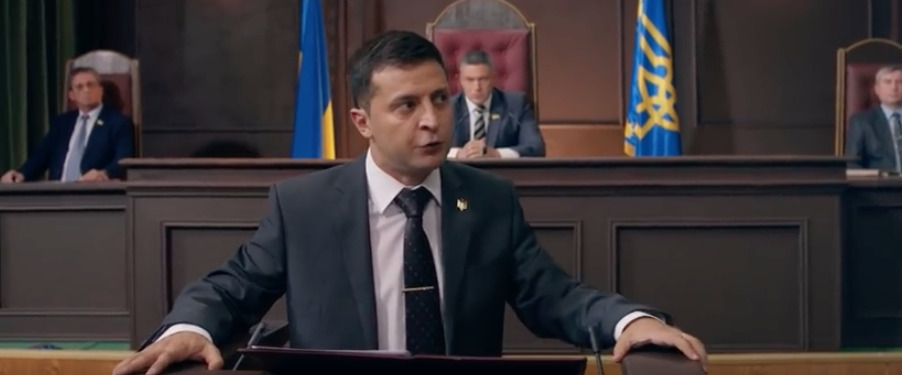
In an ironic twist of fate, this oligarch went from pulling the Ukrainian leader’s strings to having his life ruined by the same man who he thought was his puppet.
Many observers were shocked when the SBU arrested Zelensky’s former patron, oligarch Igor Kolomoysky, on charges of fraud, corruption, and money laundering over the weekend. The Ukrainian leader then thanked the security services in his evening address “for their determination to bring every case stalled for decades to a just conclusion.” This development comes two and a half years after the US sanctioned Kolomoysky on related pretexts, thus suggesting that the latest move was endorsed by them.
His arrest is due to several converging factors that also explain why it happened at this particular time. First, the vicious blame game that broke out between the US and Ukraine last month over the failed counteroffensive threatens to derail their relations if it isn’t soon resolved. At the core of this dispute are US accusations that Ukraine is arrogantly ignoring the military-strategic advice that it’s been given. Accordingly, the US has an interest in removing those who it suspects of negatively influencing Zelensky.
It’s unclear exactly what sway Kolomoysky might have still exerted over Zelensky after the latter fell largely under US influence since the start of Russia’s special operation a year and a half ago, but it makes sense why Washington wouldn’t want to risk the chance that he could play a role in their escalating spat. This observation doesn’t explain why he was arrested only just now, however, thus leading to the second relevant factor regarding the urgent need to manage Ukrainian and US public opinion.
People in both countries are growing fatigued and frustrated with this conflict. The challenge this poses for Ukraine is that it reduces support for prolonging the proxy war, plus folks are now starting to remember some of his other unfulfilled promises like fighting corruption. As for the US, a lot of Americans no longer want to fund Ukraine, or they at least want accountability for how their money is being spent after fearing that figures in this infamously corrupt country are stealing their tax dollars.
It therefore made sense for Zelensky to finally stage a public spectacle by allowing the arrest of his corrupt patron. He killed two birds with one stone by satiating both publics at no cost to himself. In fact, the latest phase of his anti-corruption campaign actually works in his political interests, thereby segueing into the third factor pertaining to the newfound US pressure on him to hold presidential elections next spring as planned.
Zelensky will almost certainly run for re-election even though he hasn’t yet officially announced his candidacy. He’s still somewhat popular with his people, as are most leaders whenever there’s a conflict being fought on their territory (or the territory that they claim as their own in this case), but his failure to effectively fight corruption despite prior promises disappointed many. By letting the SBU arrest his former patron Kolomoysky, however, Zelensky hopes to regain some of his base’s lost trust.
These three factors – the US wanting to consolidate its influence over Zelensky as bilateral ties become more complicated; the need to satiate the Ukrainian and US publics’ anti-corruption demands; and the incumbent’s undeclared re-election campaign – account for Kolomoysky’s arrest at this particular time. Simply put, it serves both states’ interests. In an ironic twist of fate, this oligarch went from pulling the Ukrainian leader’s strings to having his life ruined by the same man who he thought was his puppet.
https://natyliesbaldwin.com/2023/09/and ... elections/
*******
Ukraine’s Dystopian “State in a Smartphone” App is Taking the World by Storm — with America’s Help
Posted by INTERNATIONALIST 360° on SEPTEMBER 6, 2023
Stavroula Pabst

[Photo credit: Unsplash]
DIIA, Ukraine’s state-in-a-smartphone app, has digitized and centralized 120 government services as part of Ukraine’s wartime efforts to become the most “convenient” and “digital” country on earth.
Despite the app’s dystopian disposition and severe prospects for mass surveillance and function creep, similar versions, like Estonia’s mRIIK and Poland’s mObywatel, are being tested and adopted all around the world — thanks to the help and funding of the United States.
DIIA: “The State and Me”
As its Ministry of Digital Transformation’s flagship project, Ukraine has been touting its DIIA smartphone app as a “one-stop-shop” for 120 online government services, including taxpayer services, digital IDs, driver’s licenses and digital biometric passports.
And, as part of Ukraine’s larger wartime plans to become the world’s most “convenient” and “digital” country, DIIA’s presence in Ukrainian daily life is rapidly expanding: 19 million people are now estimated to use the app, which has been downloaded onto about 70 percent of Ukrainian smartphones.
While proponents boast of DIIA’s ease-of-use and ability to boost the public’s participation in civil society, its propensity for ethical and social harms are difficult to overestimate. After all, DIIA is an acronym for “The State and Me,” in Ukrainian, which suggests the facilitation of a more hands-on, direct relationship between the state and civilian.
Critically, however, this “hands-on relationship” pushed through apps like DIIA also facilitates the government’s unprecedented access to the civilian and their private lives and personal information, simultaneously constructing a hyper-centralized digital infrastructure that could facilitate or inhibit civilians’ access to critical services and public life.
And it’s not hard to imagine scenarios where the state’s direct access to the populace’s smartphones could be weaponized in dangerous ways: if the government can add, remove, or otherwise manipulate public services with the push of a few buttons, they can make major decisions about daily life with relative impunity.
It’s clear, moreover, that DIIA and its equivalents are being designed to play key and growing roles in civilians’ economic, social, and daily lives. As I noted for Unlimited Hangout, many people prove their identity via DIIA to access banking services. Reporter Dan Cohen highlighted on Redacted, further, that CNN and Eurovision were available through DIIA, showing the tool’s propensity as a (government-curated) entertainment- and information center alike.
Despite DIIA’s dystopian disposition and apparent capacity for endless function creep, as demonstrated by its collaborative use with Telegram as a tool to help spy on and report Russians and even alleged “collaborators” to the authorities, the elite have declared DIIA a resounding success both as a tool for government services and war. “Diia was a gleam in someone’s eye just in 2019,” Sa
mantha Power exclaimed about Diia in an interview with Mykhailo Fedorov, Ukraine’s Minister of Digital Transformation, and CNN’s Andrea Mitchell. “And here we are just four years later, a massive full-scale invasion later, and you have more than 120 services available to citizens.”
In light of its perceived successes, DIIA and adjacent app-based government services like Estonia’s mRIIK, are being tested and adopted all around the world — thanks to the help and funding of the United States and especially its foreign aid and development “soft-power” arm, USAID.
Governments Everywhere Take Interest in DIIA Equivalents — With USAID’s Help
As news of DIIA spreads, governments around the world are exploring utilizing equivalent and adjacent services within their borders. At the forefront is Ukraine’s Baltic neighbor Estonia, whose DIIA-based mRIIK app is set to launch in the near future. Through mRIIK, citizens will be able to access a variety of public services, including digital identity cards, passports and driver’s licenses, though it’s currently unclear whether they’ll be accepted with the same legal authority as their paper equivalents without changes to Estonian law.
Poland, further, has launched DIIA-adjacent “mObywatel,” or “My Citizen,” a government services app which had already been downloaded over 9 million times by late February of this year. mObywatel offers a variety of public services, including eRecepty (ePrescriptions), eZwolnienia (eSickLeave) and mPrawoJazdy (mDrivingLicence). According to the Polish Government, 1.4 billion e-prescriptions were issued in 2022, suggesting eObywatel’s high adoption rate amongst the general public. Large Family Cards, a system of discounts on basic goods and services for larger families, are also available through mObywatel.
USAID, meanwhile, is facilitating new collaborations between Ukraine’s Ministry of Digital Transformation and other countries. As I noted in Unlimited Hangout, USAID provided years of financial, technical, and legal support towards DIIA’s development and launch, and has pledged $650,000 to “jumpstart the adoption of Diia-like systems and the digital technology services that underpin them” elsewhere.
At May’s DIIA in DC event, United States Agency for International Development (USAID) Administrator Samantha Power announced planned collaborations between Ukraine’s Ministry of Digital Transformation, USAID and the governments of Kosovo, Colombia, and Zanzibar towards the creation of their own public services apps.
Mykhailo Fedorov noted in an interview with US-backed Radio Svoboda, further, that Ukraine was in communication with “more than five countries” about the prospects of developing equivalent applications to use within their own borders. Ethiopia has also been mentioned as a candidate for a prospective state smartphone application. Speaking with Financial Times writer Gillian Tett, moreover, USAID Administrator Power suggested that paper-reliant American officials could perhaps learn from DIIA’s successes in government digitization.
In short, as the Atlantic Council puts it, “Ukraine’s Diia system could soon be serving as a model [for digital governance] throughout the transitional world.”
Critically, USAID is widely suspected to be a CIA front. As such, the group’s apparently intense interest in DIIA and equivalent state smartphone apps, as I wrote in Unlimited Hangout, perhaps even “posits another dimension of surveillance potential through the app — data gathering for the intelligence community.”
After all, USAID has a track record of data-gathering shenanigans around the world: for example, the organization had even created a Cuban twitter equivalent, ZunZuneo, in 2010 to meddle in the country’s affairs. According to The Guardian, the ZunZuneo app at its peak drew in about 40,000 users, who “were never aware it was created by the US government, or that American contractors were gathering their private data in the hope that it might be used for political purposes.” While USAID is more open about its relationship with DIIA than it was with ZunZuneo, the ZunZuneo incident shows that DIIA and adjacent state service apps’ prospects for mass data collection and surveillance, especially for “political purposes,” cannot be discounted.
Many of these international “state in a smartphone apps” may be based directly off DIIA, finally, perhaps suggesting the app’s possible standardization across borders, and therefore even centralization or interoperability internationally. After all, according to a June 2023 e-Estonia’s podcast episode, strides are being made towards interoperability between DIIA, mRIIK, and even the prospective EU digital wallet, which is slated to hold a variety of key digital documents. In fact, Mykhailo Fedorov wrote on Telegram in mid-July that DIIA will assist in the development of the EU Digital Wallet, and that DIIA representatives showed off their app’s capacities at the POTENTIAL (Pilots for European Digital Identity Wallet) Consortium this summer, where the EU Digital Wallet program kicked off.
And DIIA also provides its services in the form of a digital Polish residence permit, Diia.pl, in a collaboration between Ukraine and Poland (which hosts about 1.5 million Ukrainian refugees as of March 2023), allowing Ukrainian refugees to access the Schengen zone and upload other relevant government documents, like driver’s licenses, to mObywatel through DIIA.
In short, the emerging picture depicts efforts towards hyper-centralized state services’ unlimited access to and possible ability to gather data on civilian populations, perhaps even in ways that will become interoperable across borders.
And while these digitized government services are not mandatory for civilians to use at the time of writing, it’s plausible they could be one day as their paper equivalents are less frequented or otherwise phased out. After all, such apps are already being nudged on the larger population to encourage uptake: Ukraine, for example, has provided stipends to war-affected civilians through DIIA.
Towards App-Based Governance?
While proponents boast DIIA’s convenience and propensity to boost participation in civil affairs and crush corruption, the tool’s prospects for mass surveillance, function creep and even social control are ultimately unprecedented. Such issues, however, remain little discussed despite the concept’s rapid international proliferation. And assistance and investment to DIIA and adjacent projects through USAID, considering the organization’s track record, only signals the US’ desire to mass surveil or otherwise influence other nations’ affairs as war in Ukraine deepens.
Unfortunately, because DIIA is an effort grounded in a fusion of public but also private, and therefore functionally unaccountable, efforts (including the likes of tech and financial giants, such as Visa), those developing and spreading it and similar apps have little contact with or responsibility to the very public who will likely be nudged into using the technology.
In other words, DIIA’s likely coming to a country near you soon.
https://libya360.wordpress.com/2023/09/ ... icas-help/
Declasified: How US Deceived Russia Over NATO Enlargement
Posted by INTERNATIONALIST 360° on SEPTEMBER 6, 2023
Kit Klarenberg

Yeltsin kept schtum on the military bloc, and enlisted in the Partnership for Peace. Despite plans for NATO expansion already being well-laid by that point, and very much in motion, he remained silent about developments.
On August 18th, the official Twitter account of NATO’s Allied Command Transformation published a slick animated video, seeking to “get [the] facts straight” on the “defensive alliance”, and dispel “false myths” about its nature and objectives, disseminated by Russia.
Among those “myths” is the notion NATO promised Russia it would not expand after the Cold War. Of course, there is ample documentary evidence indicating that in the two years leading up to the USSR’s December 1991 dissolution, Mikhail Gorbachev and other high-ranking Soviet officials were repeatedly told precisely that by their US opposite numbers. This is well-known to the point of being uncontroversial, begging the obvious question of why the alliance maintains otherwise in the present.
Less understood is how NATO enlargement into the former Warsaw Pact and Soviet Union was achieved, in the face of significant Russian hostility, during the 1990s. The sordid tale is nonetheless amply spelled out in a highly revealing tranche of documents released by the US National Security Archive. The files reveal how Russian President Boris Yeltsin was consistently manipulated by his US counterpart Bill Clinton on the question during the 1990s, while bold, false promises of a “strategic partnership” between the countries repeatedly came to nothing.
Take for instance the transcript of a cordial July 5th 1,994 telephone conversation between Clinton and Yeltsin. At the time, the US President was preparing to depart for soon-to-be NATO members Poland and the Baltics, before meeting with Yeltsin at the G7 summit in Italy.
Yeltsin urged Clinton to raise the plight of Russophones in Estonia and Latvia, as “a public statement…that the US will not support any infringement on the rights of the Russian-speaking people” would mean these countries “act differently.” He noted Lithuania’s quick granting of citizenship to its Russian minority had prompted Moscow to withdraw its troops from Vilnius. The same could happen by August in Tallinn and Riga if assurances were made. Yeltsin also wished to discuss NATO expansion.
Clinton swore he’d “raise the issue of the Russian minorities,” and reassured Yeltsin that while NATO might “eventually expand,” he’d set out “no timetable and no requirements.” Instead, he indicated that he’d “like us to concentrate” on Partnership for Peace, a US-led initiative seeking to “achieve a united Europe where people respect each other’s borders and work together.” Yeltsin would’ve been entirely forgiven for thinking the Partnership was Washington’s primary focus, and NATO an afterthought, by the conclusion of the chat.
‘New Form of Encirclement’
The Russian president’s optimism about “a mutually beneficial partnership with the US on the basis of equality” is evident in a letter he sent to Clinton in November that year. Yeltsin spoke of this prospective coalition as “the central factor in world politics,” and pledged to cooperate constructively with the US on issues related to Bosnia, Iraq, North Korea, and Ukraine.” He “eagerly” awaited their meeting at that December’s Conference on Security and Cooperation in Budapest, where “we have much to talk about … first of all, transforming European stability.”
As it was, the Hungarian summit was a disaster. Clinton dubbed NATO as “the bedrock of security in Europe,” and boldly declared “no country outside will be allowed to veto expansion,” clearly referencing Russia. In response, Yeltsin used his own oratory to fulminate, “it is a dangerous delusion to suppose the destinies of continents and the world…can somehow be managed from one single capital.” He further warned, “[moving] the responsibilities of NATO up to Russia’s borders” would be a grave error.
An internal US diplomatic memo from the day after shows lessons were promptly learned from this embarrassing episode. Namely, the urgent need to keep quiet publicly about US plans for extending the military alliance, while offering bogus private assurances to Moscow that any enlargement would only occur after consultation between the two countries, and Russia was still in the running for bloc membership.
Fast-forward to May 1995, and Clinton visited Moscow to celebrate the 50th anniversary of Allied victory in World War II. These conscious, deliberate lies were on full display during his one-on-one meeting with Yeltsin. Records of the event suggest the pair’s rapport was genuinely chummy, although serious matters were very much on the table too. The Russian president pleaded to his US counterpart:
“How do you think it looks to us if one bloc continues to exist while the Warsaw Pact has been abolished? It’s a new form of encirclement if the one surviving Cold War bloc expands. Many Russians have a sense of fear. What do you want to achieve with this if Russia is your partner? We need a new structure for Pan-European security, not old ones! Perhaps the solution is to postpone NATO expansion until the year 2000 so that later we can come up with some new ideas.”
Clinton somewhat amazingly suggested Moscow should view his approach to NATO “in the context of greater integration of Russia into other international institutions,” while dangling the prospect of various sweeteners, including membership of the G7, if Yeltsin quietened his anti-NATO rhetoric, and kept his opinions on the bloc’s expansion to himself. Clinton knew well that such compliance was easily bought. As his Russian “friend” acknowledged, his position heading into the 1996 Presidential election was “not exactly brilliant.”
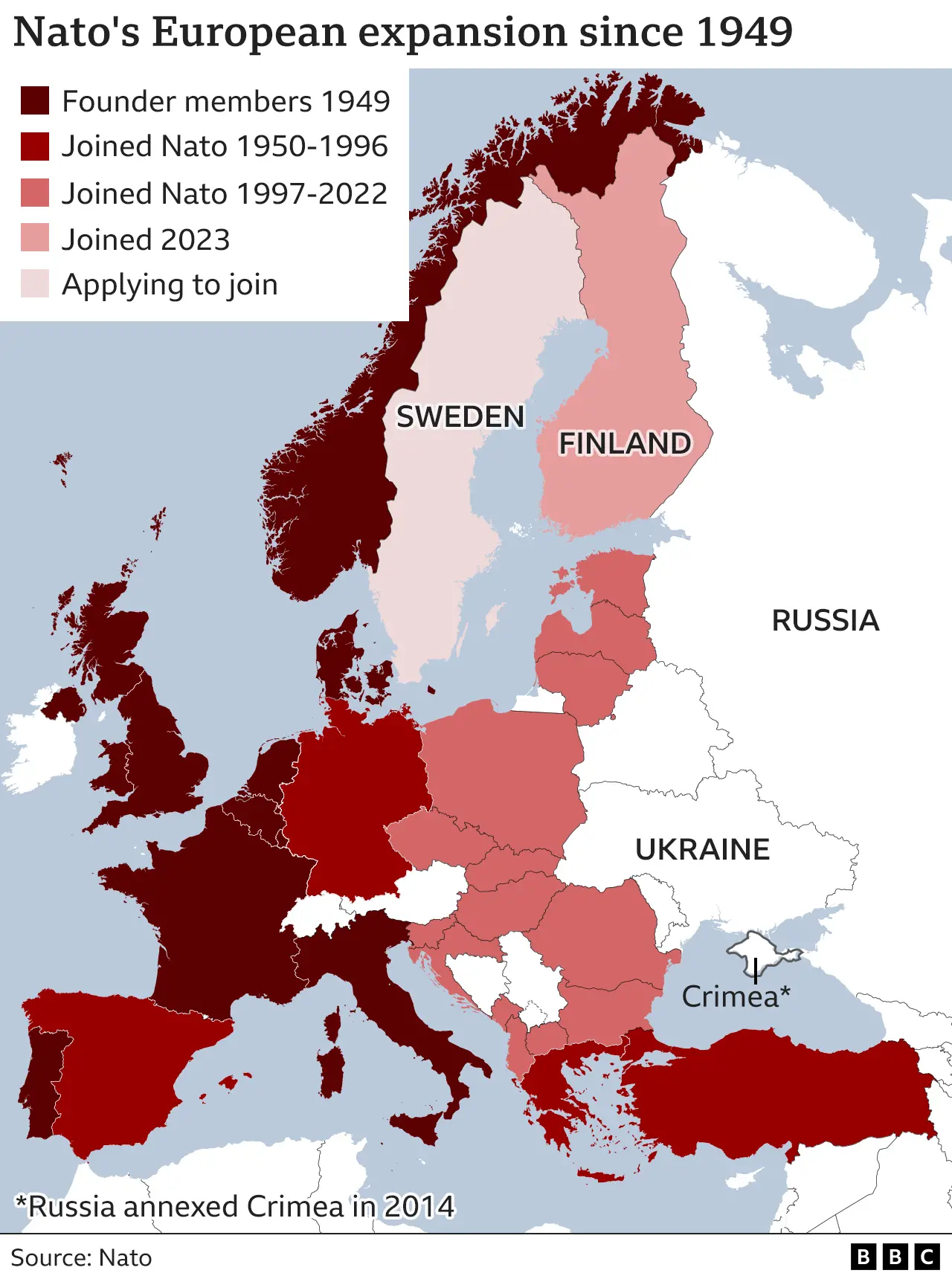
‘A Tragic Mistake’
At that time, Yeltsin’s polling stood in the single digits, and his Communist rival Gennady Zyuganov was widely forecast to win via landslide. Yeltsin spoke of needing “positive reports” in the press, and to “head off even the smallest wrong move.” He proposed any discussion of NATO enlargement being kept theoretical until 2000, and urged the White House not to do anything to “rile the situation up before the elections.” Clinton duly pledged:
“I’ll do nothing to accelerate NATO [expansion]. I’m trying to give you now, in this conversation, the reassurance you need. But we need to be careful that neither of us appears to capitulate. For you, that means you’re not going to embrace expansion. For me, it means no talk about slowing the process down or putting it on hold or anything like that.”
So it was that Yeltsin kept schtum on the military bloc, and enlisted in the Partnership for Peace. Despite plans for NATO expansion already being well-laid by that point, and very much in motion, he remained silent about developments. The Russian President’s acquiescence was further assured by extensive covert and overt US assistance in his election campaign, which was fundamental to transforming an initial six percent standing in the polls to an extremely comfortable victory.
Less than three years later, NATO began engulfing the former Soviet sphere, incorporating the Czech Republic, Hungary, and Poland. This push was opposed Stateside by, among others, George Kennan – a committed ‘Cold Warrior’ and key figure in the alliance’s creation. In May 1998, following the US Senate ratifying NATO’s enlargement, he wrote:
“I think it is the beginning of a new Cold War…The Russians will gradually react quite adversely, and it will affect their policies. I think it is a tragic mistake. There was no reason for this whatsoever. No one was threatening anybody else…Of course, there is going to be a bad reaction from Russia, and then [the NATO expanders] will say that we always told you that is how the Russians are – but this is just wrong.”
Today, with Russia and Ukraine at war and the latter’s political and military future, if not outright existence as a state, in the balance, Kennan’s words give the disquieting appearance of an unheeded prophet’s warning come terribly true.
https://libya360.wordpress.com/2023/09/ ... largement/
******
APU sent the last reserve brigades into battle
September 6, 23:29

APU sent the last reserve brigades into battle
In September, the last of the reserve brigades of the Armed Forces of Ukraine, trained with the help of NATO, left for the front.
The last reserves went on the offensive - they went together to strengthen the attack on Rabotino. Even the 82nd brigade had to be obtained with carefully stored Challengers
In addition to them, by the way, the "Offensive Guard" joined the offensive (what is it ( https://t.me/z_arhiv/18626?single)? ). In particular, "Kara-Dag", "Spartan", "Azov" (yes, these are the basics of the National Guard of the 15th brigade of the NGU, and not the 3rd ODShBr) - deployed between Rabotino and Novopokrovka. And to the north, the Novopokroyks sent the National Guard to reinforce: 11 (Mikhail Grushevsky) and 27 (Pecherskaya).
From the latter, in an attempt to stabilize the front near Svatovo, a new 43rd mechanized brigade was sent, and the 68th chasseur brigade was also transferred there.
At the same time, in the battle for Rabotino for three months, the enemy participated:
Comparing with the so-called "leaked report" ( https://t.me/z_arhiv/20101?single ) (you can see the approximate equipment of the brigades), which allegedly revealed the plans of the Armed Forces of Ukraine for the offensive - the image shows all the new brigades and which of them are already involved.
offensive in the south
Kleshcheevka
Kremennaya
Matchmaker
Kupyansk
( https://t.me/z_arhiv/23371?single)
In addition, the enemy began to actively engage "individual rifle battalions." They are given to brigades while they send line battalions on rotation. At the same time, on paper, they are included in the 141, 142, 143 and 144 brigades.
In Ukraine, from October 1, women will be put on military records.
There is already a catastrophic shortage of men, now they plan to rake in the women.
Work also continues to organize the deportation of male refugees from Europe.
The raking of students, people with various types of disabilities, etc. is facilitated. and so on.
300,000 new cannon fodder won't pick themselves up. Volunteers are long gone. There remains the routine of processing the remaining male population of Ukraine into minced meat, which we will observe at least in the next year.
https://colonelcassad.livejournal.com/8616431.html
Google Translator

